Experience audio bliss with Panasonic's SC-PM270! Compact yet powerful, it's the perfect blend of style and sound. Elevate your tunes effortlessly.
The post Panasonic’s Groovy SC-PM270: Compact Sound, Big Impact! first appeared on Trendy Gadget.
Experience audio bliss with Panasonic's SC-PM270! Compact yet powerful, it's the perfect blend of style and sound. Elevate your tunes effortlessly.
The post Panasonic’s Groovy SC-PM270: Compact Sound, Big Impact! first appeared on Trendy Gadget.
Dive into macro wonders with Panasonic's S-E100 lens! ? Unleash creativity with the world's lightest medium-telephoto marvel. Coming soon for $999.99!
The post Panasonic’s S-E100: Macro Magic Unleashed at CES 2024! first appeared on Trendy Gadget.
Dive into a cinematic revolution with Hisense's 8K Sonic Screen Laser TV at CES 2024! Rollable screens, ultra-slim elegance, and automotive innovation await.
The post Hisense’s Mind-Blowing Laser TV Awesomeness at CES 2024! first appeared on Trendy Gadget.
Flying cars and AI assistants are a dime a dozen – but have you ever seen a router so adorable it would be the highlight of your interior decor??
The SmartAir Minions Routers were so oddly located in a corner of the Westgate area of the CES 2024 exhibition that it was easy to miss. As chance would have it, I headed to the Westgate area to look for another company, only to suddenly notice these minions through the corner of my eye sitting on a counter. Given the fact that CES is predominantly a tech show, I obviously wondered why these plush-looking toys were on display. A few seconds in it dawned on me – these lifelike characters from the Despicable Me franchise were, in fact, dual and triple-band WiFi 6E routers capable of multi-gigabit internet. The added bonus? They look more adorable and presentable than your existing WiFi router ever could.
Designer: Davolink
The routers come in two models, designed to resemble the two key characters in the Minion-verse, the short and adorable Bob, and the tall and klutzy Kevin. The choice of these two characters play well into the routers’ features too – Bob, being smaller, offers dual-band WiFi connectivity, while the taller Kevin (and that tiny antenna-esque toupee of his) offer triple-band internet, giving you 2.4Ghz, 5Ghz, and even 6Ghz.
Together, both the routers provide a brilliant blend between wide coverage and high speeds, enabling everything from 8K streaming to even gaming. The routers eliminate dead zones too, ensuring every corner of your home has WiFi connectivity with a mesh feature to help maximize coverage.
The highlight, however, is the fact that they are a stunning replica of easily some of the most memorable and iconic characters of animated cinema in the past decade. I’ve always advocated for functional products ditching their industrial aesthetic (air purifiers and smart speakers don’t need to look horrendously industrial in today’s day and age), and it seems like it’s time that WiFi routers took that same approach. Bob and Kevin are designed to be the kind of routers that hide in plain sight. They’re adorable enough to be kept on your shelf or tabletop without feeling the need to conceal them behind curtains or other objects, and that’s really what makes them such a standout product. After all, wouldn’t you rather have a router that looks as cute as these little nitwits than something like the boring box you’re currently connected to as you read this article? My only worry is kids trying to play with these and accidentally bringing your entire home network down… but that’s a problem for another day!
The post These Minions Wi-Fi Routers were probably the most brilliant devices we saw at CES 2024 first appeared on Yanko Design.
Haven’t you always desired the screen real estate of a desktop but always loved the portability of a laptop? The dual-screen Lenovo Yoga Book 9i is living proof that brands are now more conscious of this consumer demand but there’s a catch. Such products come at higher than usual prices and are not for carefree users, as they require some degree of special treatment. HP Spectre Foldable is yet another pricey example of such a multipurpose computing machine.
While Dell and Acer have not been bold enough to release such machines, HP wants to try their luck out with the Envy Move. The 24-inch all-in-one desktop is high on portability and low on price making it an interesting product offering the best of both worlds.
Designer: HP
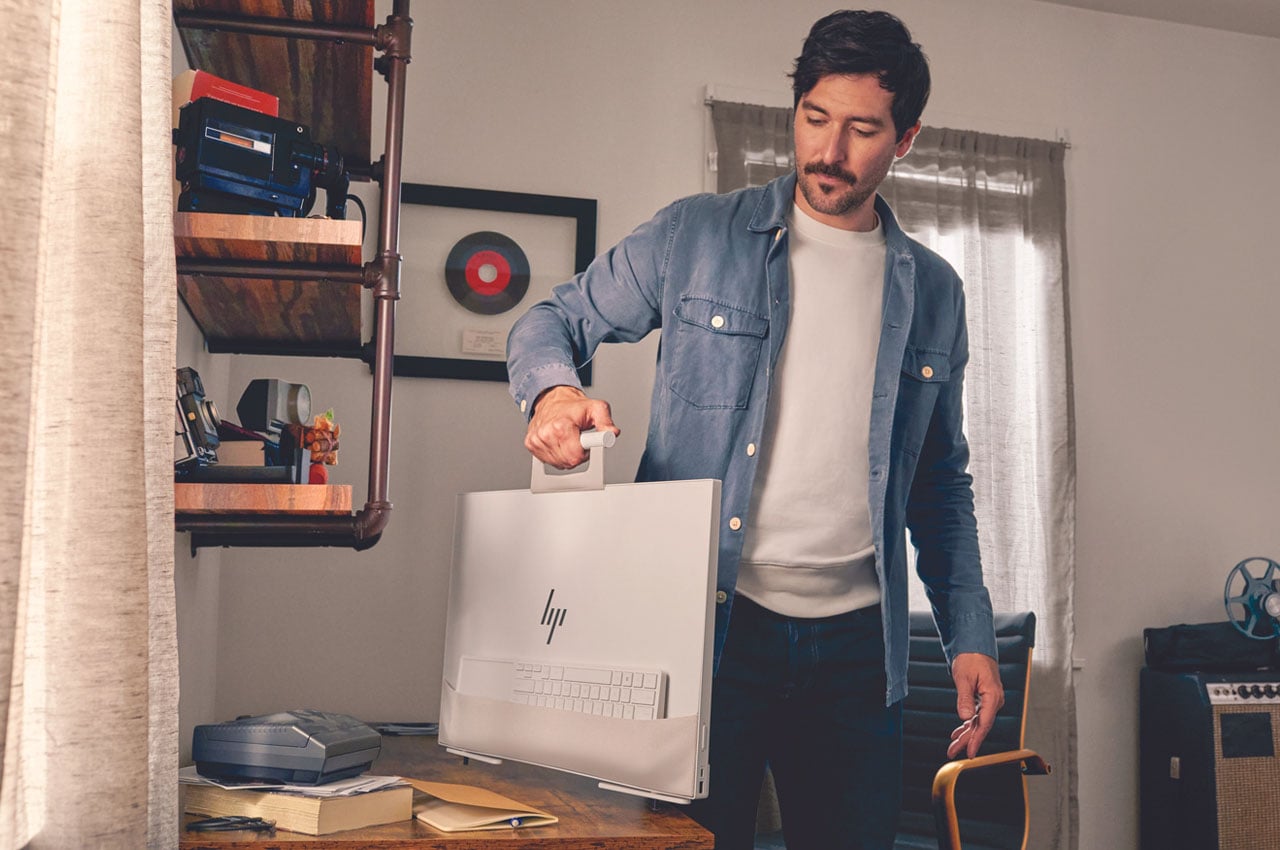

Making its first appearance under the radar at this year’s CES 2024 (the reason most of the tech community failed to notice it) the dual utility laptop seems more than utilitarian as a daily driver. The price tag of $900 is reasonable at most considering the exorbitant pricing of other such products on the market. Of course, there are some corners cut but the versatility aspect (not necessarily portability) is where the USP of this futureproof gadget lies.

The HP Envy Move is primarily a desktop with an included battery that powers the reasonable hardware and the big 24-inch 2K touchscreen. That means you can multitask with ease, providing a far better experience than laptops. The lower half of the screen tilts to create an added working area and is good for taking Zoom calls too as the webcam comes up to the eye level. That said the thickness of the device is something you won’t write home about.
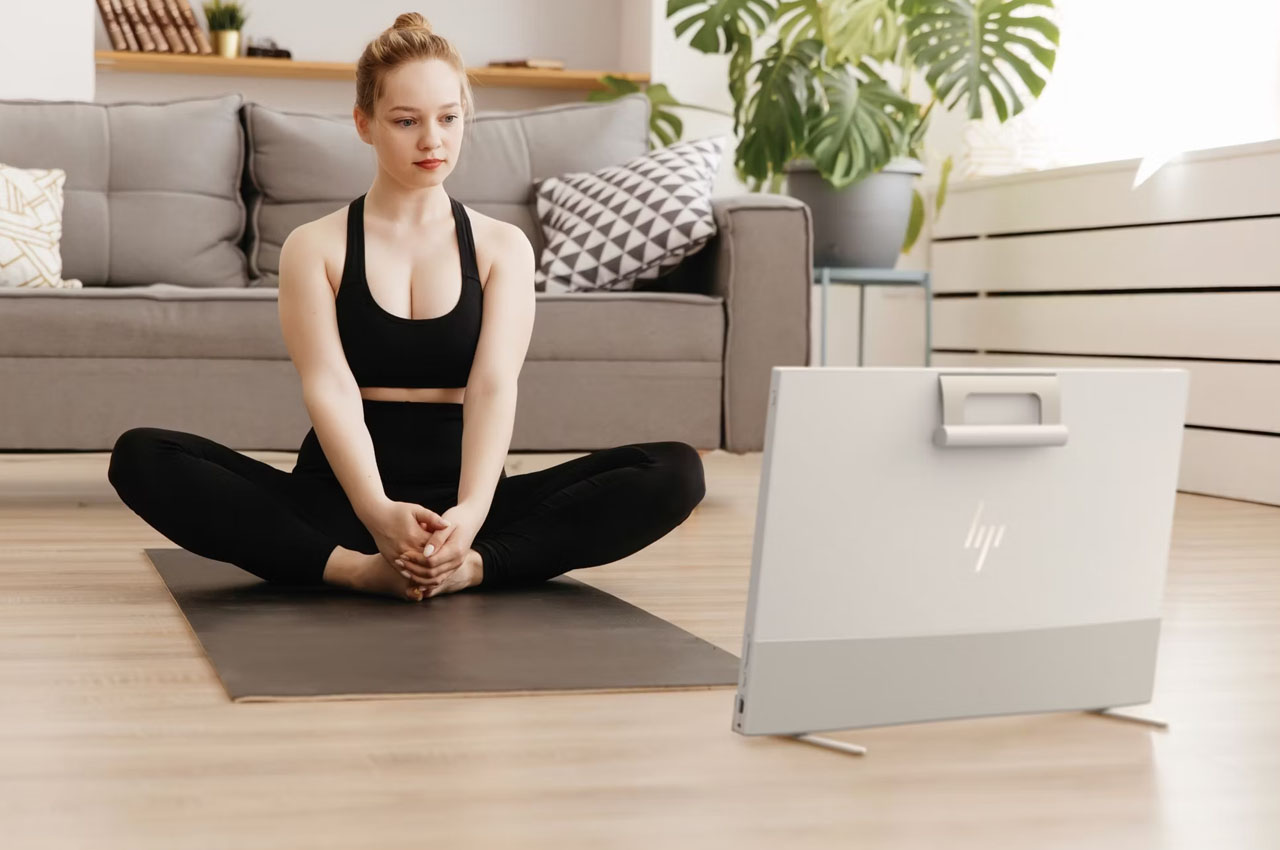
That extra space, however, does accommodate a built-in B&O speaker with a beefy bass response. This will excite audio lovers or ones who consume a lot of multimedia content. You can also use it as an external display for your main PC without worrying about the wire clutter since it has its battery power system. The smart desktop PC cum monitor seems like a good prospect, offering a practical experience for users who cannot afford a multiple PC setup.

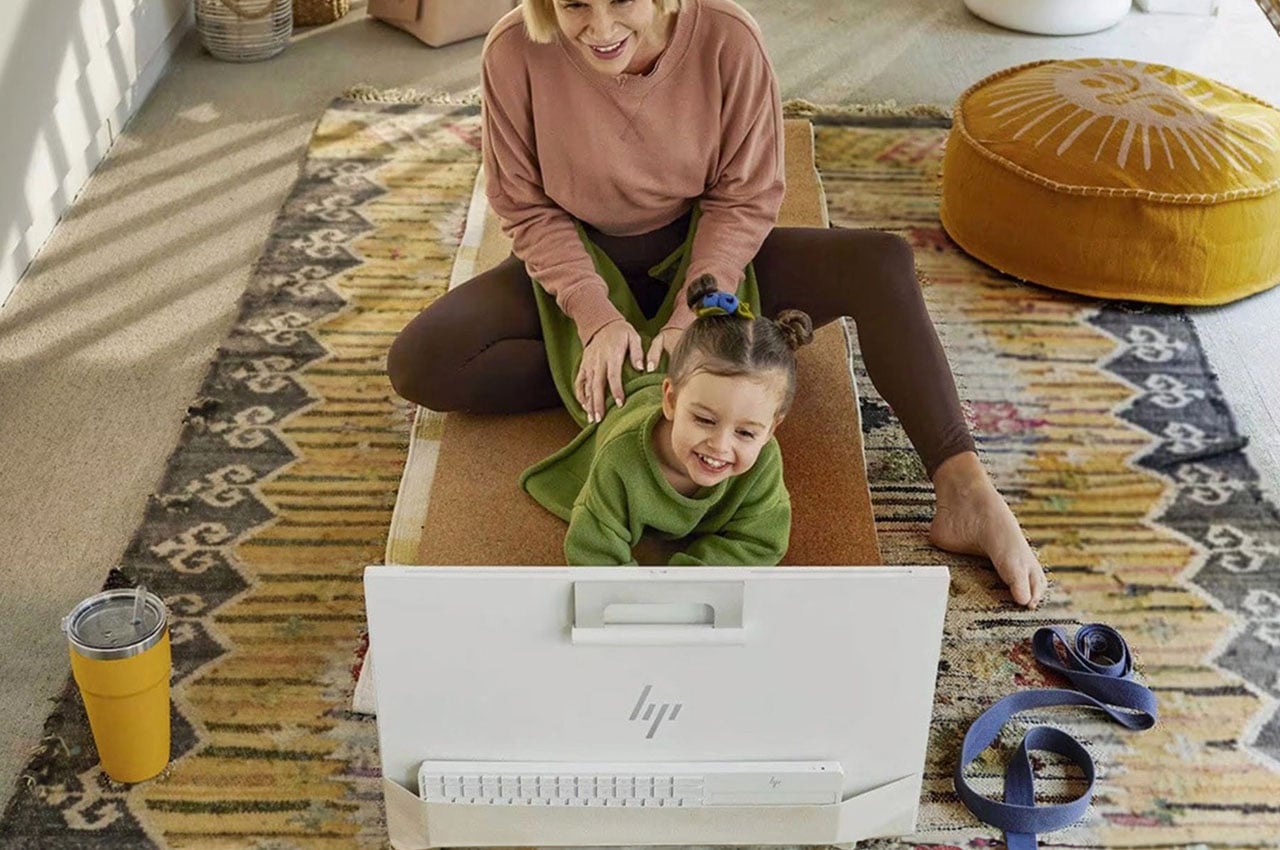

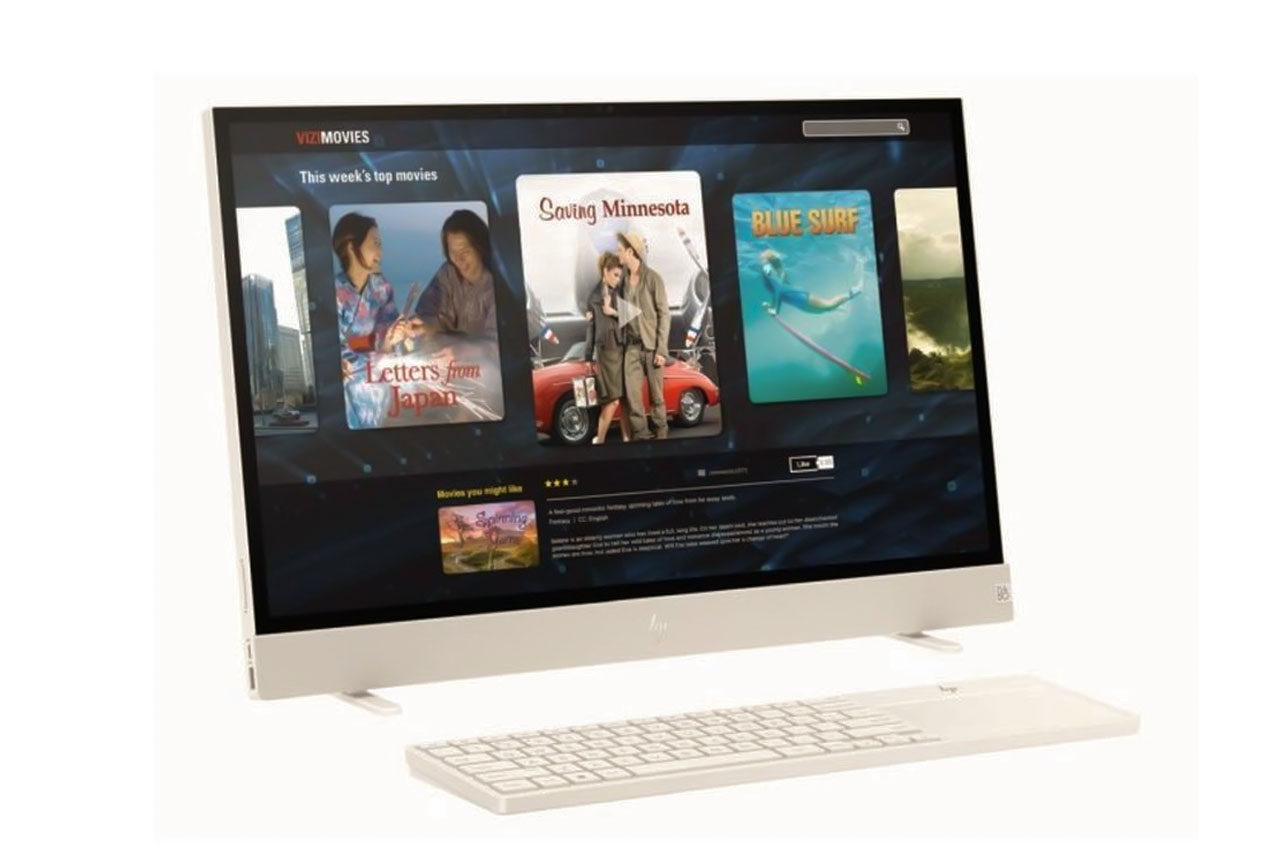
The post HP Envy Move is a vesatile all-in-one PC that supersedes your laptop in most use-case-scenarios first appeared on Yanko Design.
Touted as the world’s first power-bank with its own turbo-cooling feature, the Icemag power bank keeps itself (and your phone) breezy while charging. An ultra-silent fan moves at speeds of 8000 RPM, actively cooling the battery pack inside while the Icemag wirelessly charges your phone, preventing anything from heating up during the charging process.
Sharge has pretty much solidified its reputation for building some of the most incredible-looking charging equipment of our time. Whether it’s the transparent 170W power bank with its own LED display, or the tiny yet indomitable Flow Mini power bank that’s small enough to blend right into your phone’s design, becoming its dedicated second battery, Sharge’s built a rather wonderful ecosystem of charging gear that’s both powerful and unmistakably eye-catching. The Icemag joins that ecosystem as a first for both Sharge and the world – the 10,000mAh MagSafe battery pack comes with its own active cooling system that pushes hot air out from around the lithium-ion battery, increasing its life and overall efficiency as it charges your phone. It also comes as a rather opportune time, as Apple silently killed its own MagSafe power bank, leaving a void in the marketplace.
Designer: SHARGE
The Icemag has the same proportions as Apple’s MagSafe power bank, albeit with that aforementioned cooling system and a whopping 10,000mAh battery that charges your entire phone twice over with enough extra juice left to spare for a third charge. It sports Sharge’s unmistakable aesthetic, with a transparent panel on the front that lets you peer into the electronics inside – namely the lithium ion battery, the PCB, and that active cooling system.
The active cooling system kicks in the second the Icemag is connected to a device (whether through MagSafe or via USB-C cable). The tiny fan outputs an impressive 8000 RPM, helping circulate air within the Icemag to keep the battery actively cooled (rather than relying on a metal heat-sink like other charging apparatus). The fan operates at a deadly silent <25dB, and it was practically inaudible in the buzz and chatter of the CES floor. What was noticeable, however, was the RGB lighting around the fan that changed colors as the Icemag juiced your device. It served as a nice visual indicator of the Icemag’s activity, especially given Sharge’s tech-geek and gamer-centric audience.
The compact power bank snaps satisfyingly onto the back of your MagSafe phone, beginning the charging process instantly. An indicator on the side shows exactly how much power the Icemag’s battery still has, while a USB-C port on the base supports both power in as well as out. This means the USB-C port can be used to charge the Icemag itself or can be used to connect the Icemag to another phone to charge it conventionally (without using the MagSafe wireless charging feature). The Icemag supports pass-through charging too, letting you charge it while it wirelessly juices your smartphone, and as far as charging speeds go, the Icemag’s wireless charging coil outputs a maximum 7.5W. If you want to tap into higher speeds, connecting your phone/device via USB-C gives you an output of 20W, charging your gadgets significantly faster for when you’re in a bind.
The Icemag balances its responsibilities of being handy, eye-catching, and functional rather well. It’s compact for its capacity and weighs just 223 grams (7.9 ounces), allowing it to securely attach to the back of your phone without any problems. The 10,000mAh battery is absolutely perfect for people who blow through their phones during the day, giving you an extra battery that can support your phone multiple times. The transparent aesthetic and active cooling system, however, steal the limelight for the gorgeous nerdy-cool aesthetic they give the Icemag. The term nerdy-cool probably gets used literally in this sense because of the Icemag’s ability to keep itself at manageable temperatures as it charges your phone. I dare you to find a MagSafe power bank that’s as gorgeously functional as this one…
The post SHARGE Icemag Hands-On at CES 2024: A Cool-looking MagSafe Power Bank that Cools your Phone first appeared on Yanko Design.
Too Little, Too Early… The Wehead has a long way to go before it can be taken seriously, on both hardware and software fronts.
As we coursed the floors of the Showstoppers event at CES, my eyes landed on something familiar. I made eye contact (to the best of my ability to make eye contact with a set of virtual eyes) with the $5000 Wehead device, which I had just reported on just mere weeks ago. It sat on a lone table in the corner of the massive ballroom where the event was being held, with a few people basically gathering the courage to talk to it. Obviously, I wanted to really get a sense of what it was like to chat with an AI, but also to see whether this $5000 device was worth the hype. Long story short, the Wehead was a bit of a mess from top to bottom. The hardware lacked the kind of finesse you’d expect from a premium product, and the software failed miserably at processing requests amidst the buzz of all the people around it.
Designer: Wehead
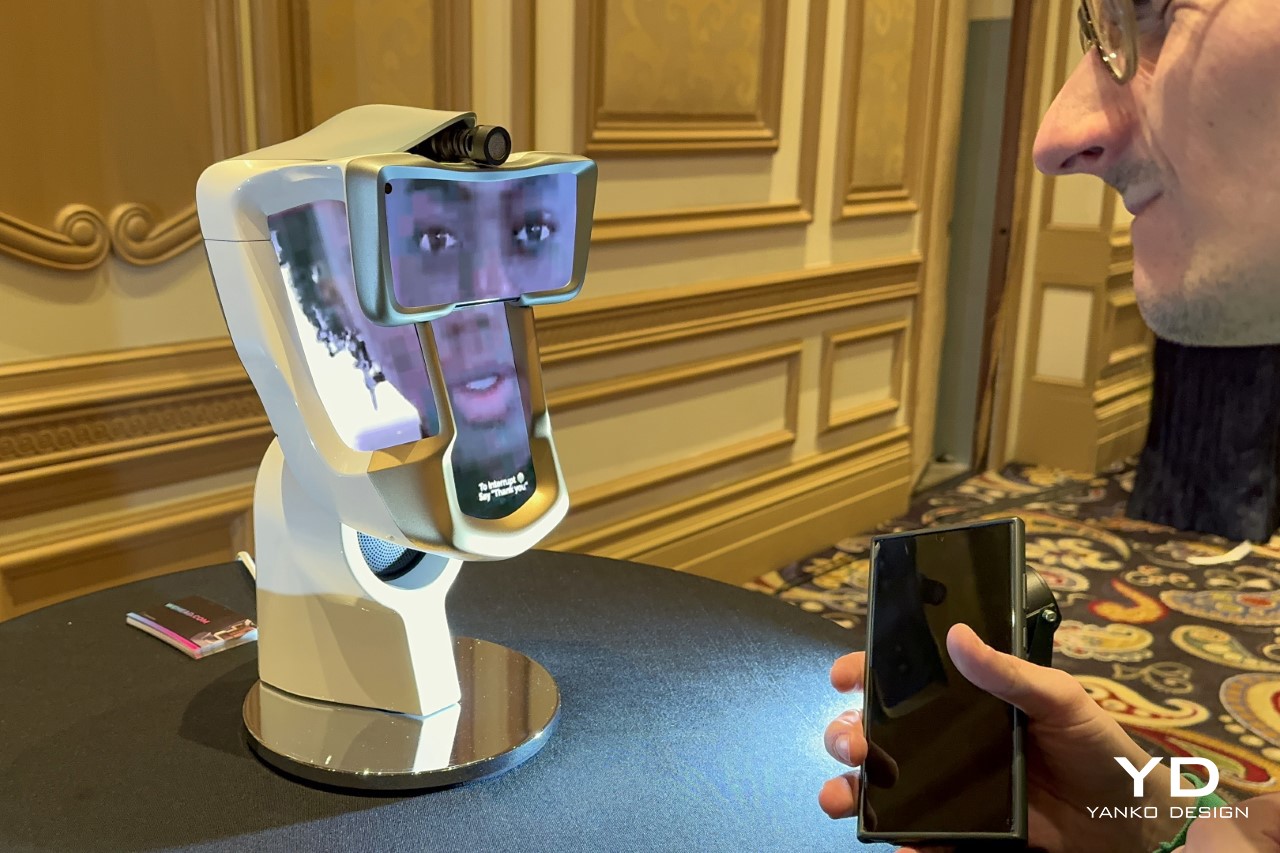
The Wehead was first envisioned as a one-of-a-kind teleconferencing device that could allow you to speak to people via video-chatting apps, but instead of staring at a screen, have you stare at a head that moved and responded to the actions of the person on the other end of the call. Somewhere down the line, the company made its transition to turning it into a ChatGPT-esque assistant that would use AI to answer queries and augment life. The difference between the Wehead and something like ChatGPT, Siri, or Google Assistant? The fact that Wehead actually had a face, which, at least in theory, would add a more immersive, believable aspect to the entire experience.
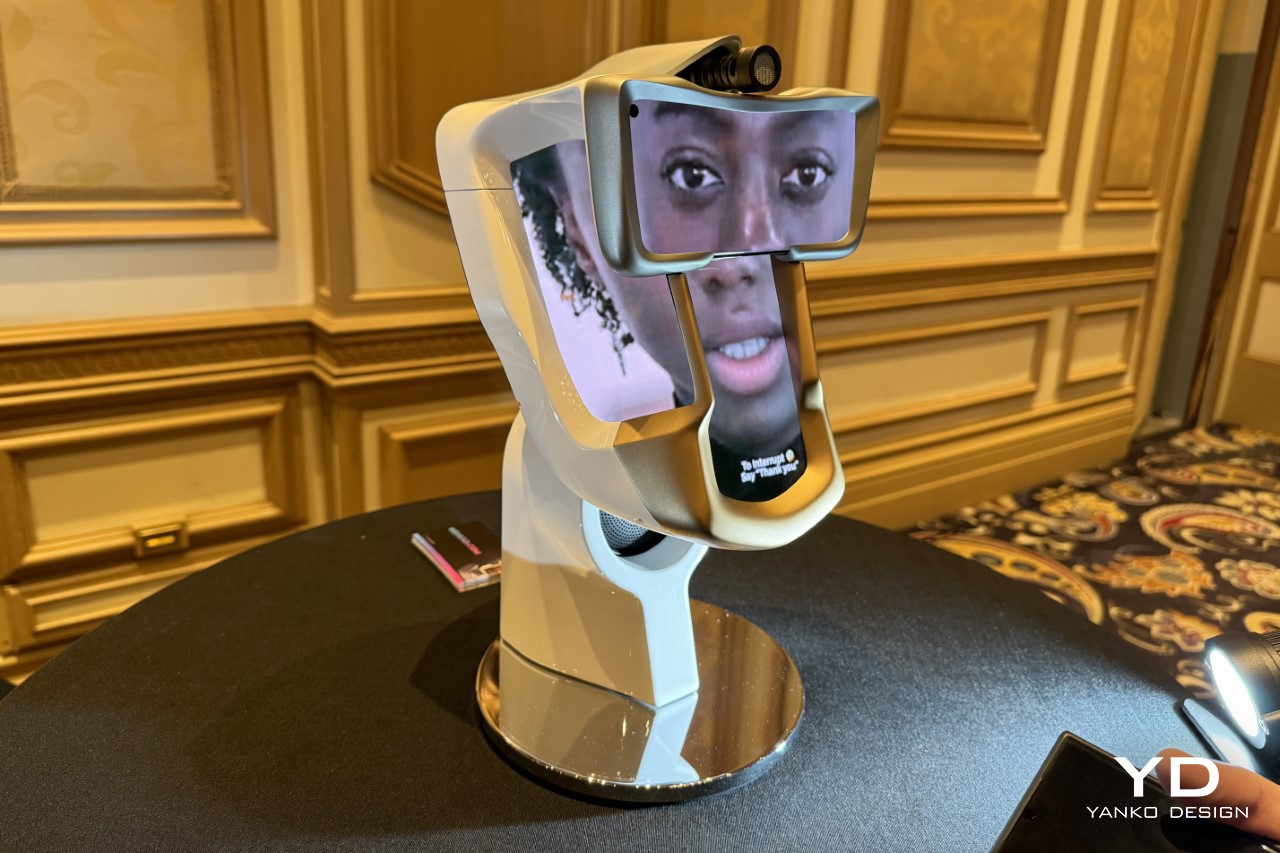
The problem, however, lay in two broad domains – firstly, the Wehead was a solution in search of a problem. The lack of a facial component to AI may be a problem, but it isn’t a problem that demands a $5000 multi-screen bionic robot. Secondly, even if that were true, the Wehead itself was a rather shoddily assembled device, using four mobile phones, a shotgun mic, and a speaker to give ChatGPT an anthropomorphized touch.
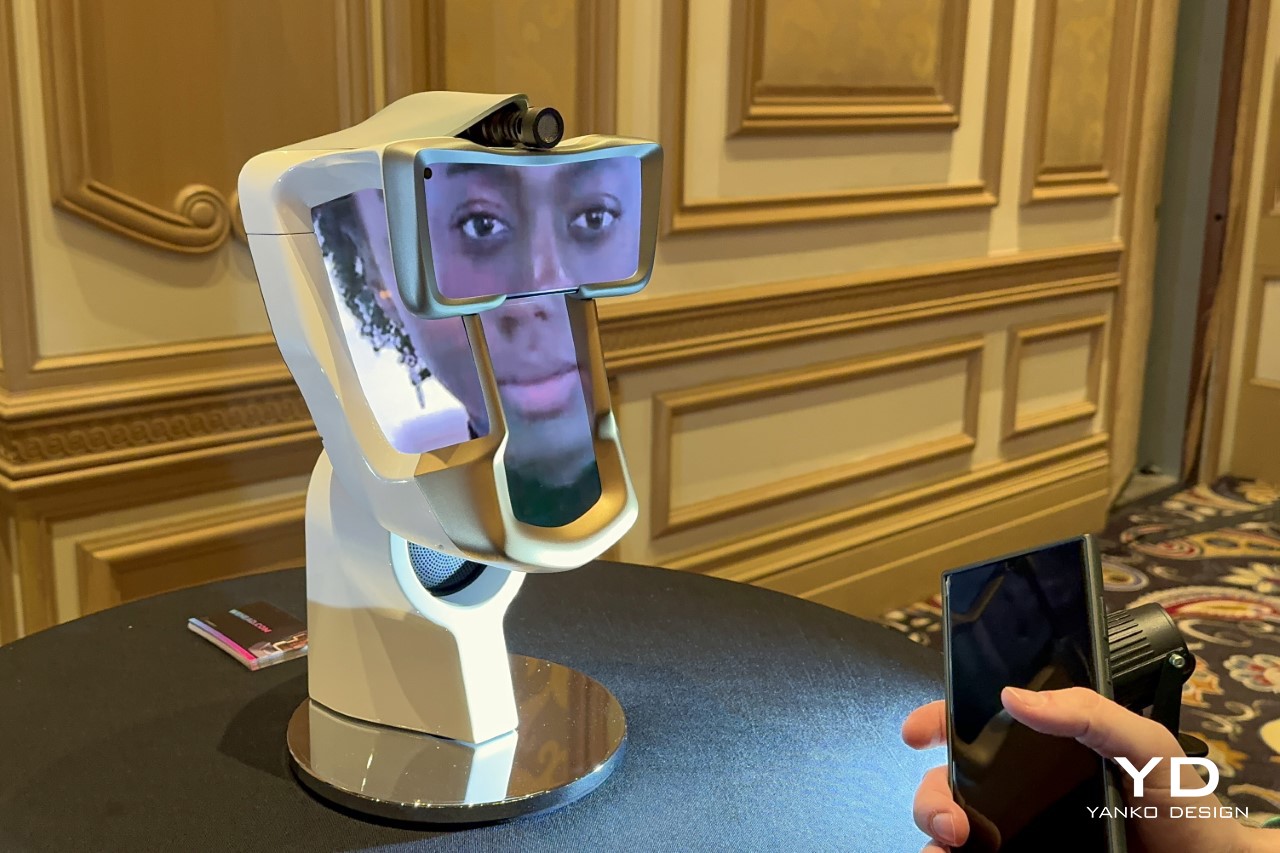
For starters, just a look at the Wehead revealed the fact that its four screens were actually smartphones assembled together into one large Macgyvered solution. The screen element with the Wehead’s eyes actually had a visible front-facing camera cutout. Above it sat an off-brand shotgun microphone that captured vocal input, and below, a small speaker where you’d expect the Wehead’s throat to be. The four screens displayed parts of the Wehead’s face, which emoted and responded to the Wehead talking, listening, and interacting.
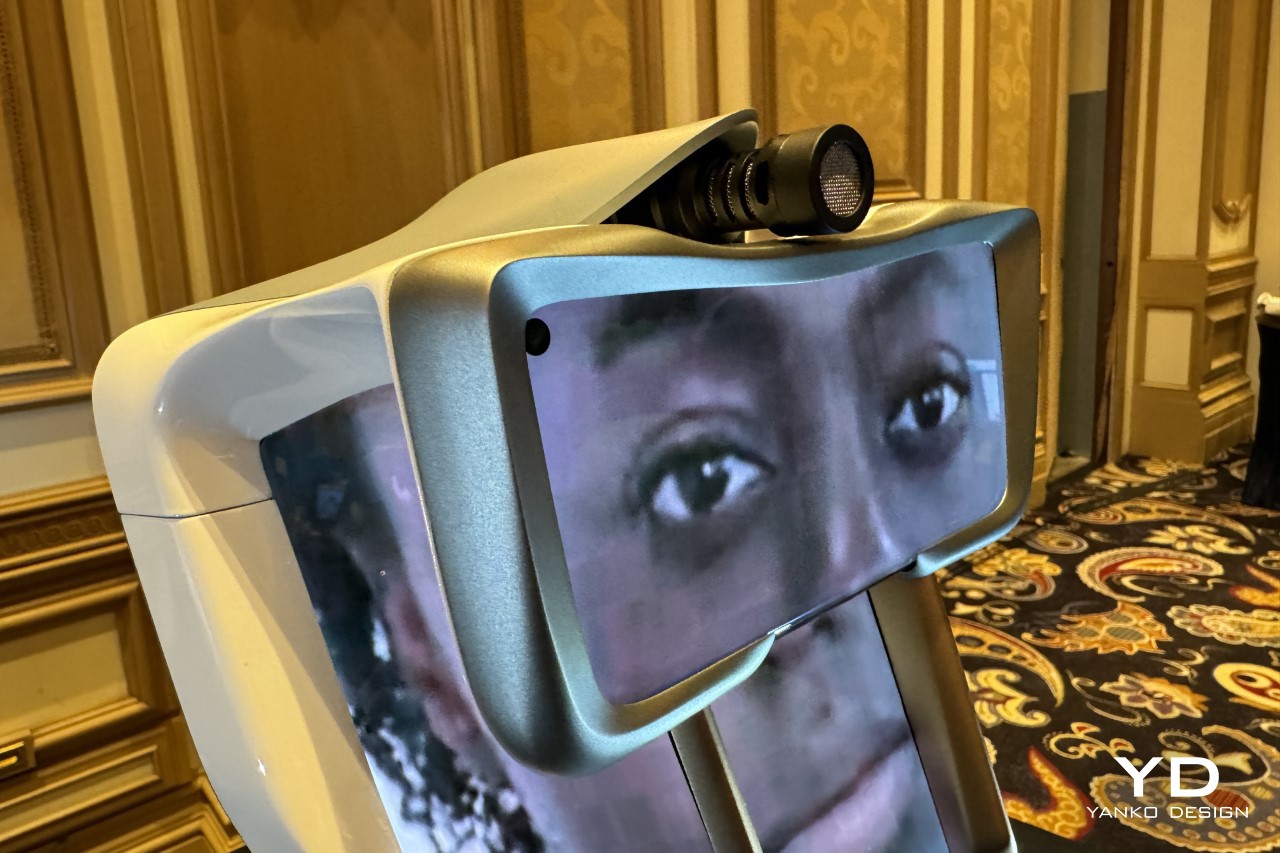
However, even though the hardware seemed to be put together by a bunch of engineering students, the Wehead failed to deliver. Its face was perpetually pixelated, which impacted the Wehead’s already dwindling realism. There was a severe mismatch between the audio and the face’s movements, adding further problems to the mix… and finally, the Wehead just couldn’t seem to grasp anything anyone said. Sure, the event was crowded, resulting in a lot of background noise, but the Wehead still managed to fail at the basic questions it grasped. When Wehead got stuck in one of its “I’m sorry, I don’t understand” feedback loops, someone from the company came by to get it to stop responding, but it took them 3 tries to get Wehead to stop. A lot can be attributed to the general event’s background chatter, but that practically set the AI head up for failure, showing its clear lack of being able to isolate audio before processing it.
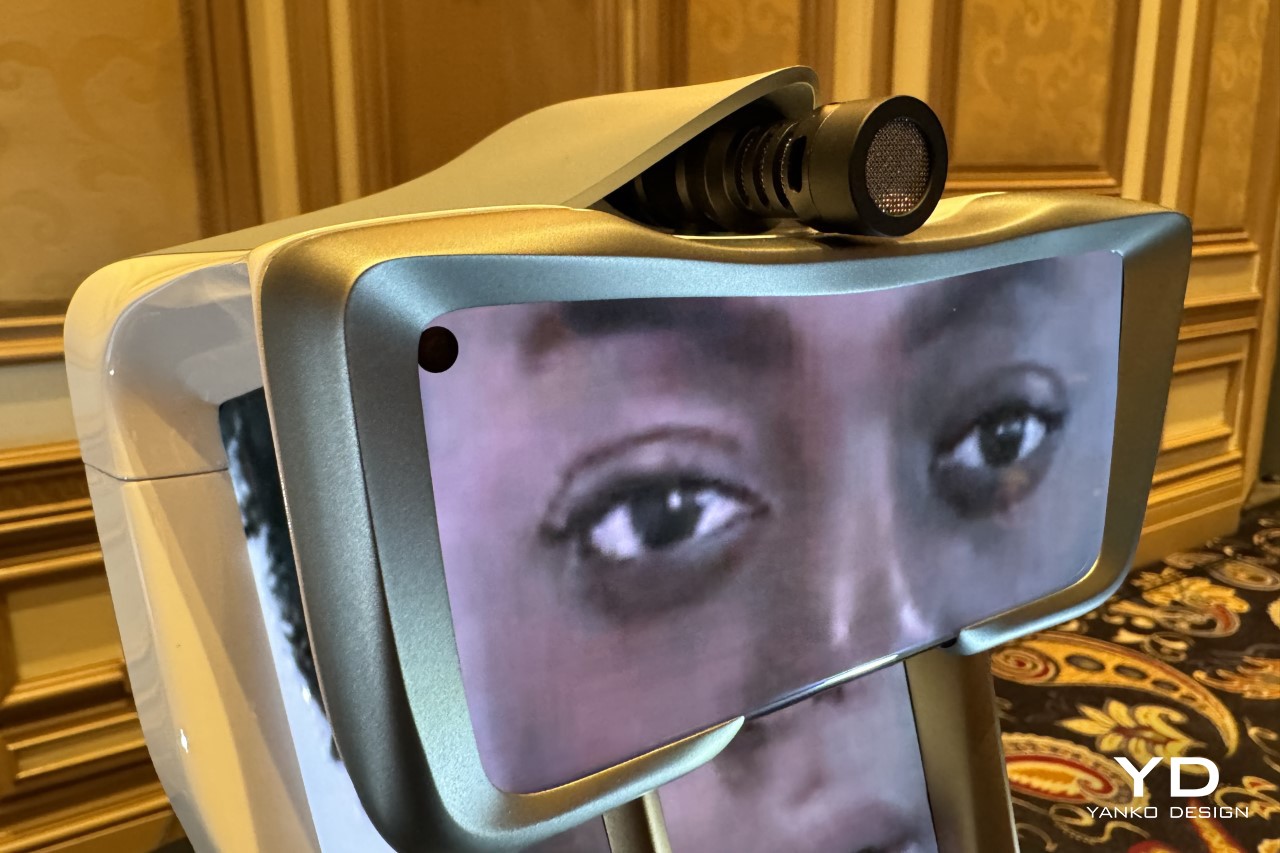
Here’s the thing though… I do think the Wehead holds great potential. It just needs a LOT of work before it can justify that price tag. For starters, maybe ditch the smartphone displays for something more unique like a curved OLED… and hide the microphone and speaker, so it isn’t that obvious that this was put together using hardware bought at Best Buy. A talking head running ChatGPT sounds impressive, but the illusion sure falls apart when it looks like a college project, and when the Wehead itself can barely pick up anything you say to it.
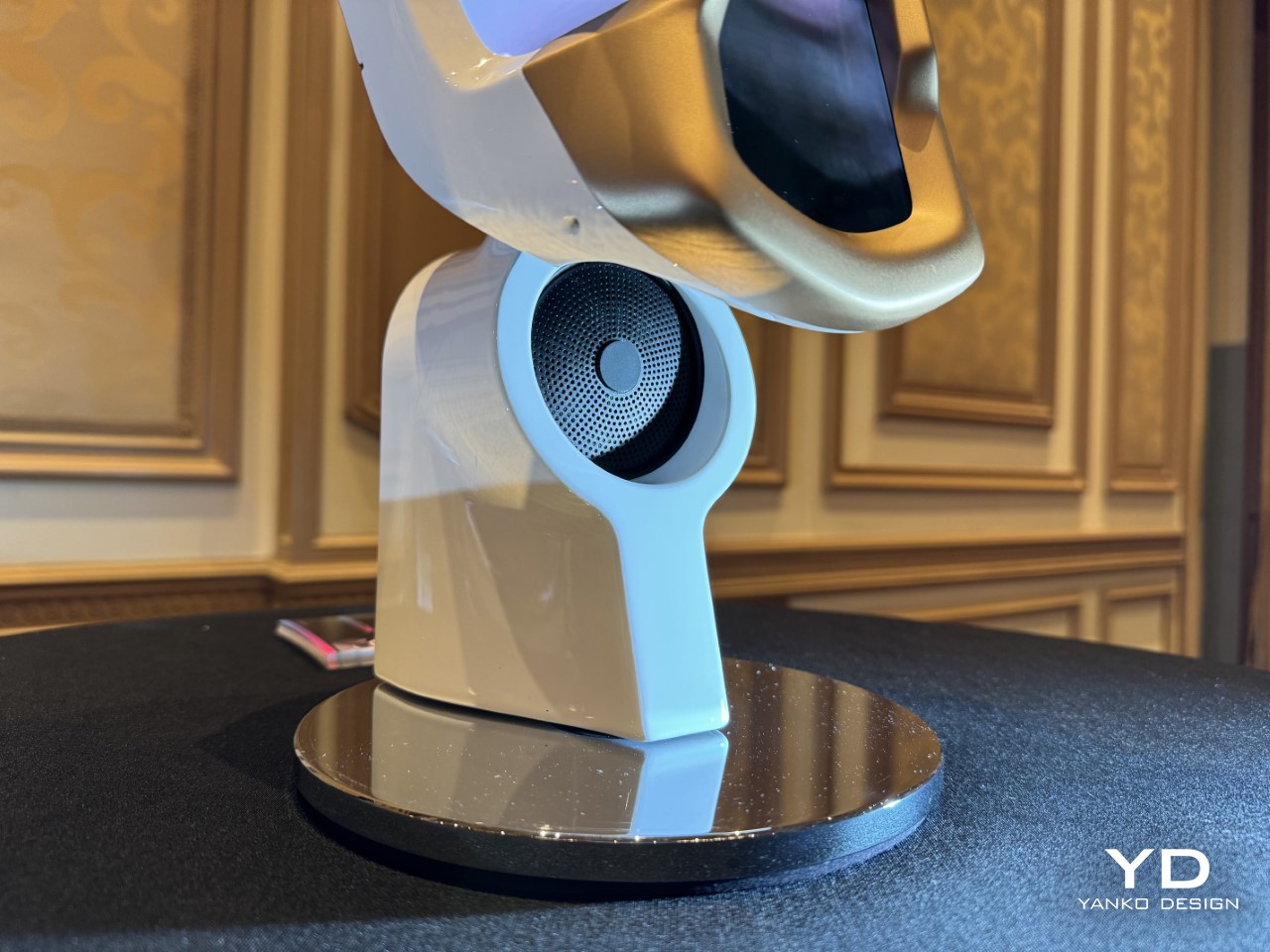
The post Hands-on with the $5000 Wehead ChatGPT-powered AI Assistant: When Technology Disappoints first appeared on Yanko Design.
As the tech world descended upon Las Vegas for CES 2024, BLUETTI, a name synonymous with portable power solutions, has once again set the gold standard with its latest offerings designed for recreation, emergencies, work, and overall energy independence. From the versatile SwapSolar system to the rugged AC240 power station, BLUETTI’s lineup this year is nothing short of a power-packed promise for both adventurers and home users. We visited the BLUETTI booth to speak to their Director of Portable Power Systems, Phillip Fischer. Phillip explained to us what BLUETTI’s been achieving in the past year, what are the new exciting products they’re debuting at CES, and why portable power stations should be on everyone’s wishlist for 2024.
Designer: BLUETTI
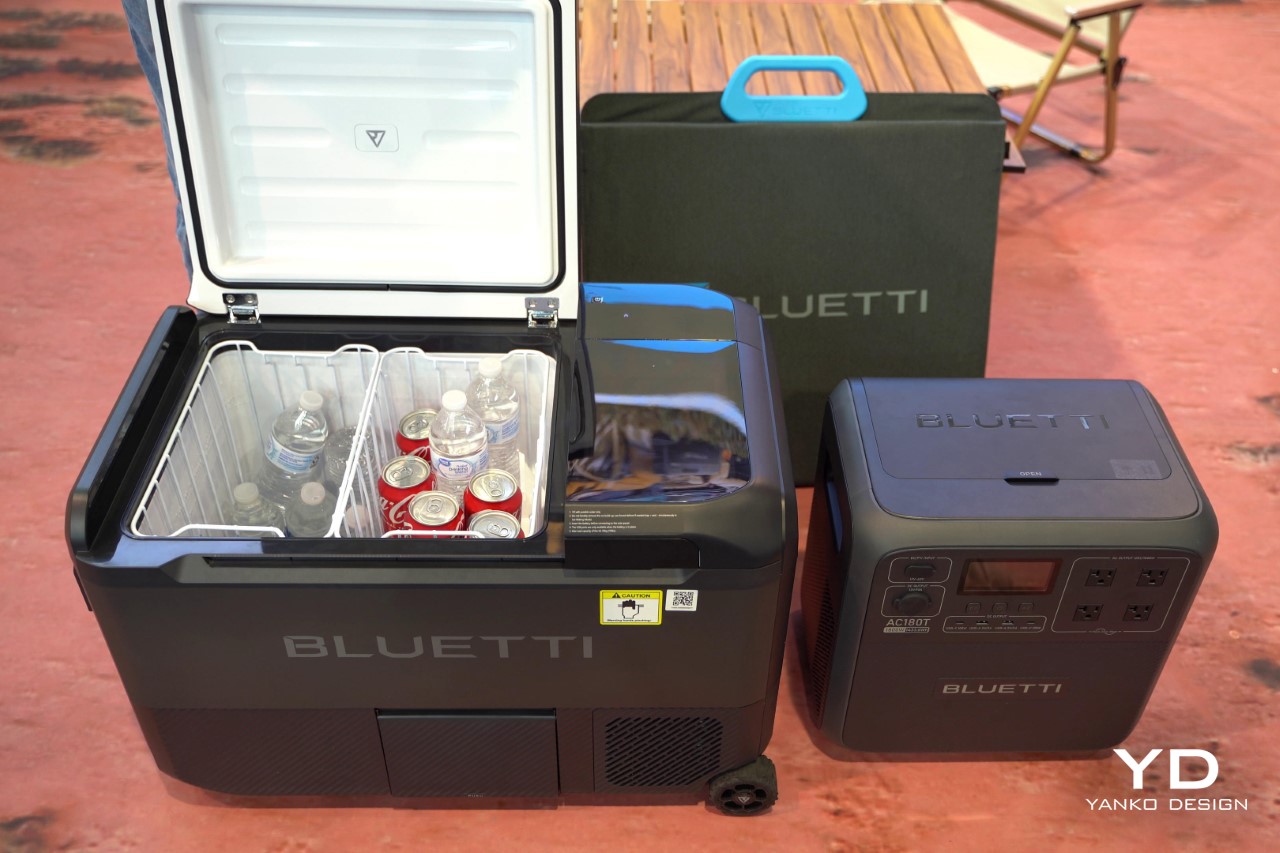
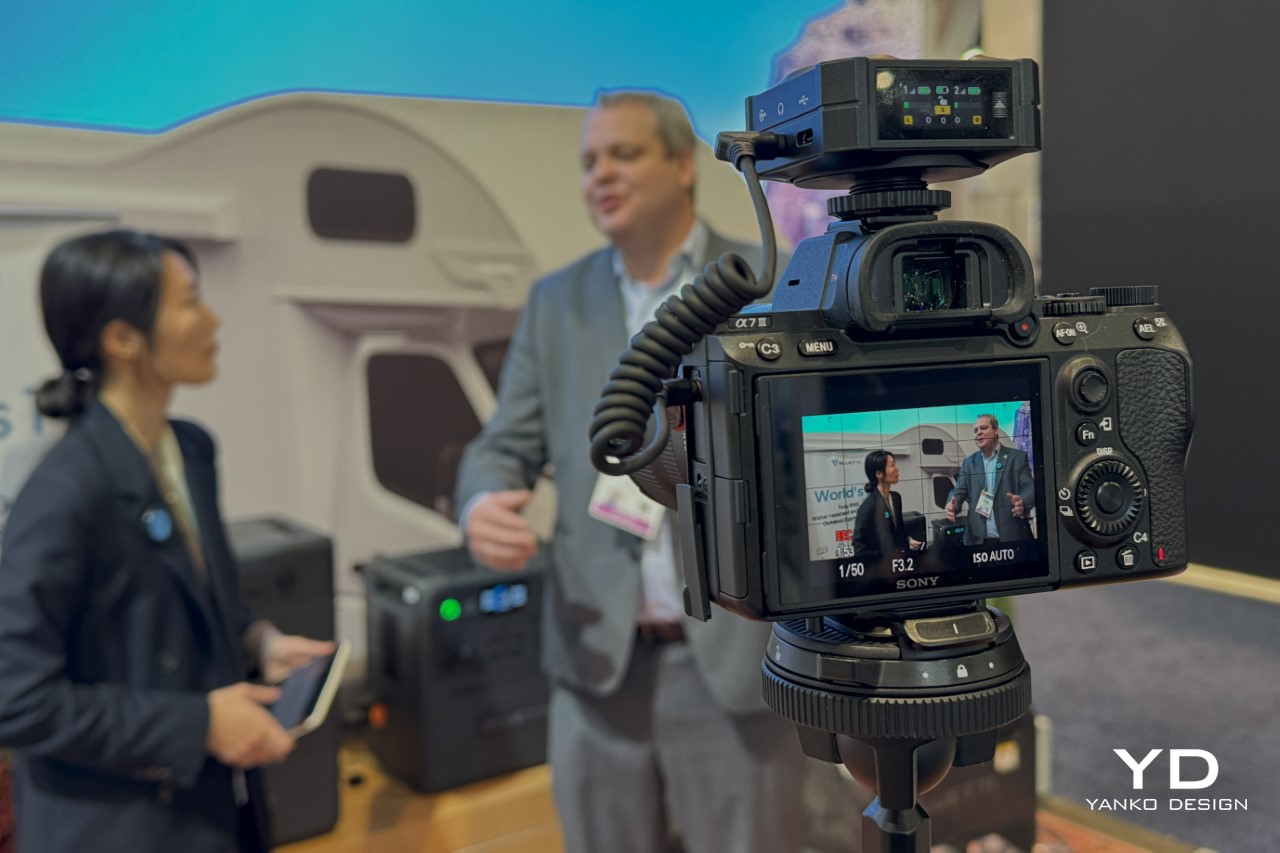
If you’re still one of those power-station skeptics in the year 2024, Phillip has some rather sage advice to give you. Sure, the average power station user is the outdoorsy type, using it to provide energy to camping sites, RVs, and other outdoor excursions/activities… but what BLUETTI’s power stations also do is provide aid and assistance during emergency power cuts. Whether it’s one of their larger devices, or even the small portable ones, BLUETTI’s power stations can be potential life-savers when the power runs out. The same power station can play multiple roles, whether it’s necessity or leisure… with the added benefit of helping you do things like shift to a solar grid too to help reduce power bills.
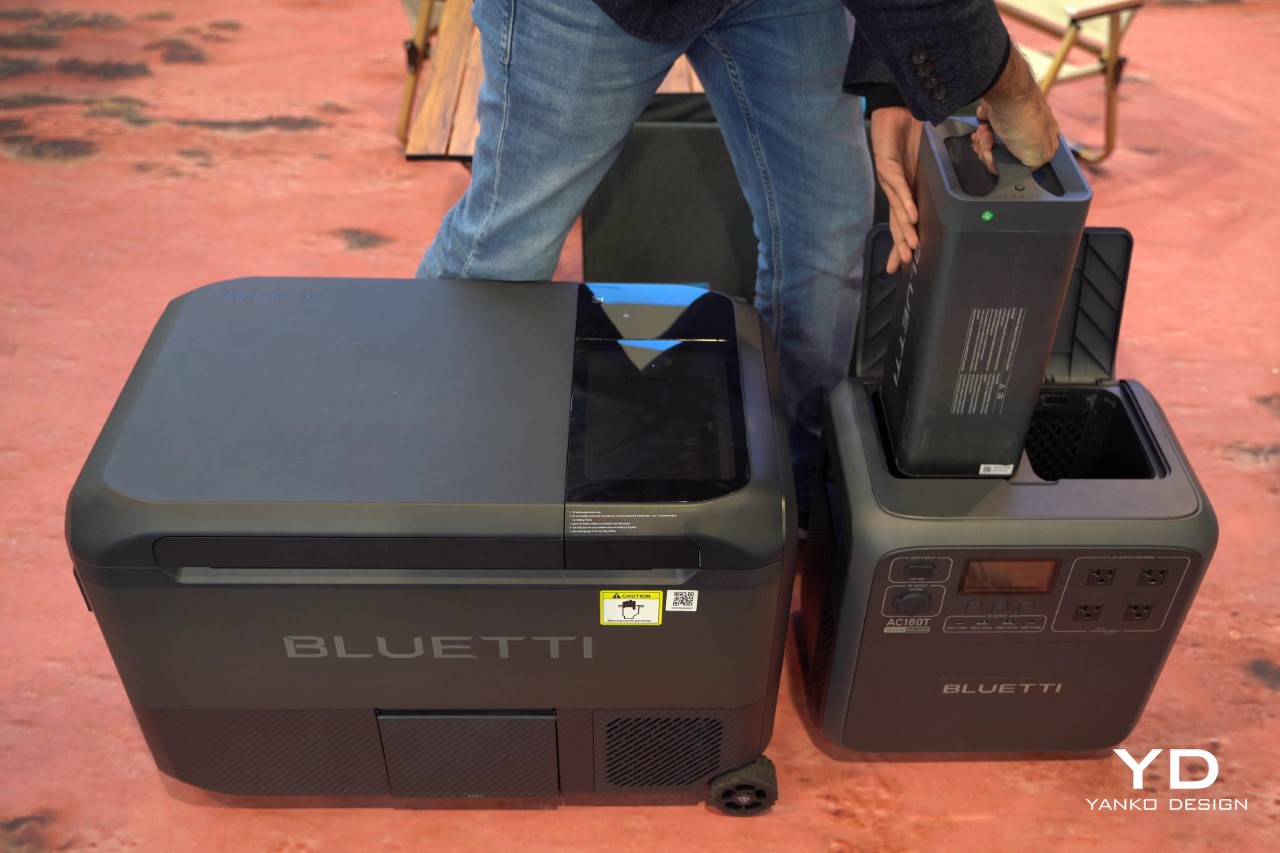
Leading the power-station charge at CES this year is the BLUETTI SwapSolar, a dynamic duo comprising the AC180T portable generator and the MultiCooler portable fridge. The AC180T can easily be confused for its sibling, the AC180 – but what really sets it apart is its game-changing hot-swappable battery system. With 1,433Wh capacity, 1,800W output, and 2,700W lifting power, the AC180T features two detachable batteries that can either be used simultaneously, or in a scenario where one battery is removed from the AC180T and placed in the MultiCooler portable fridge. Imagine never running out of power because you can instantly replace depleted batteries with charged ones.
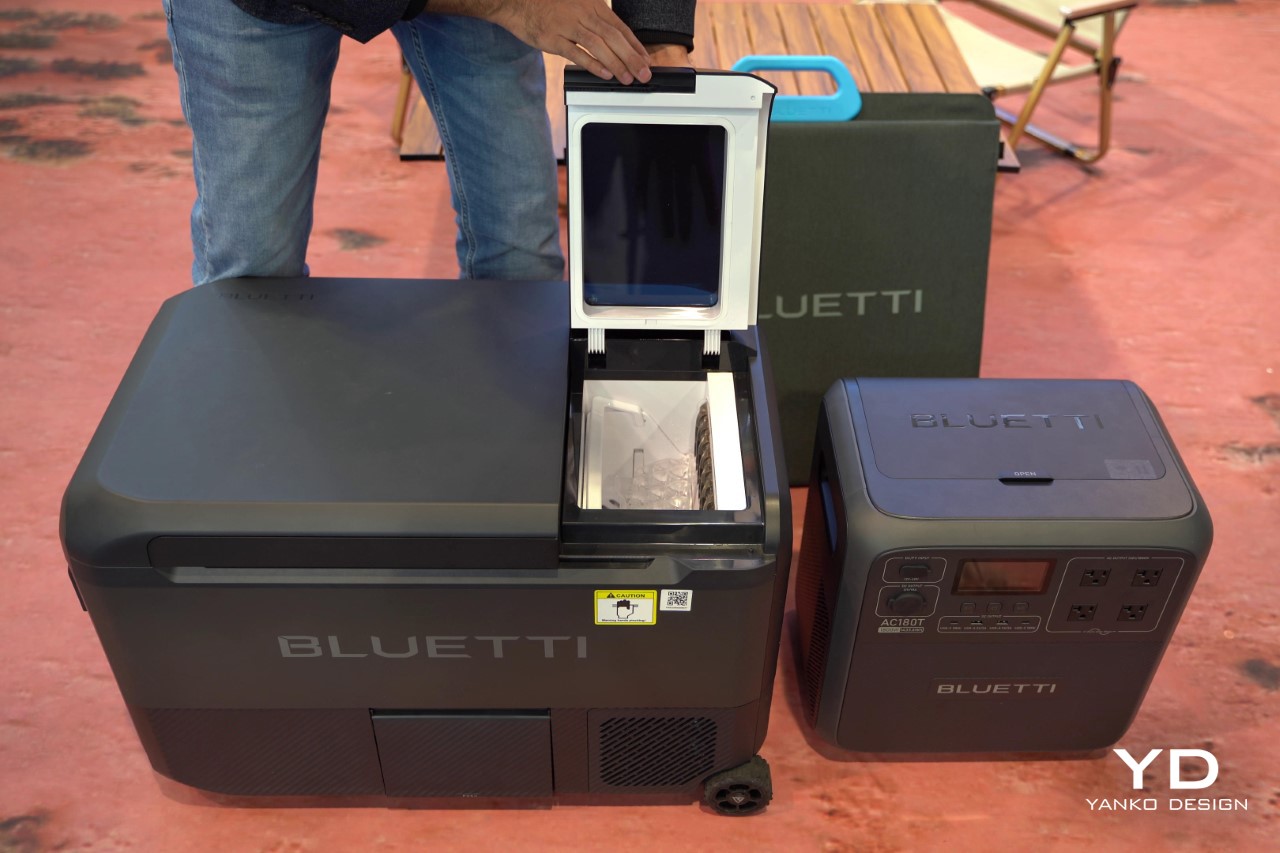
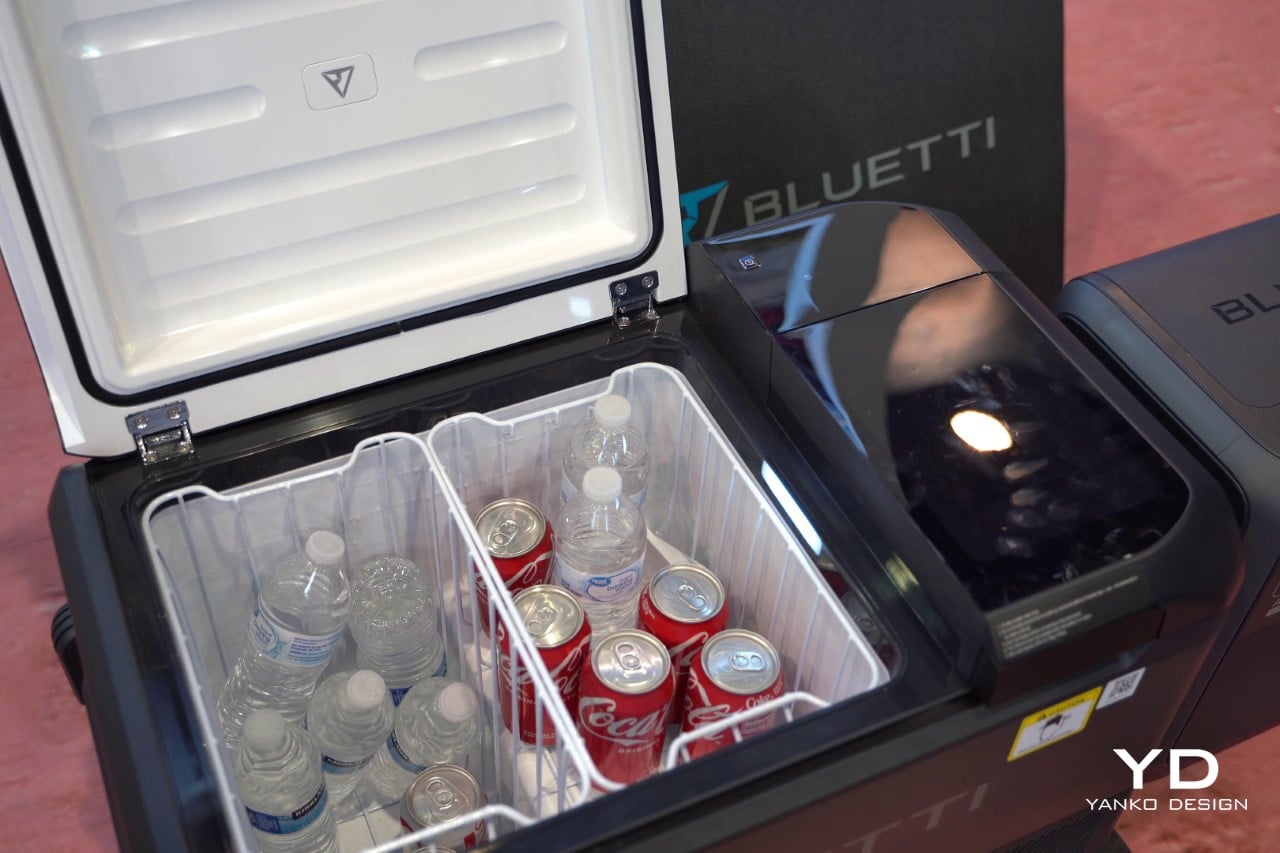
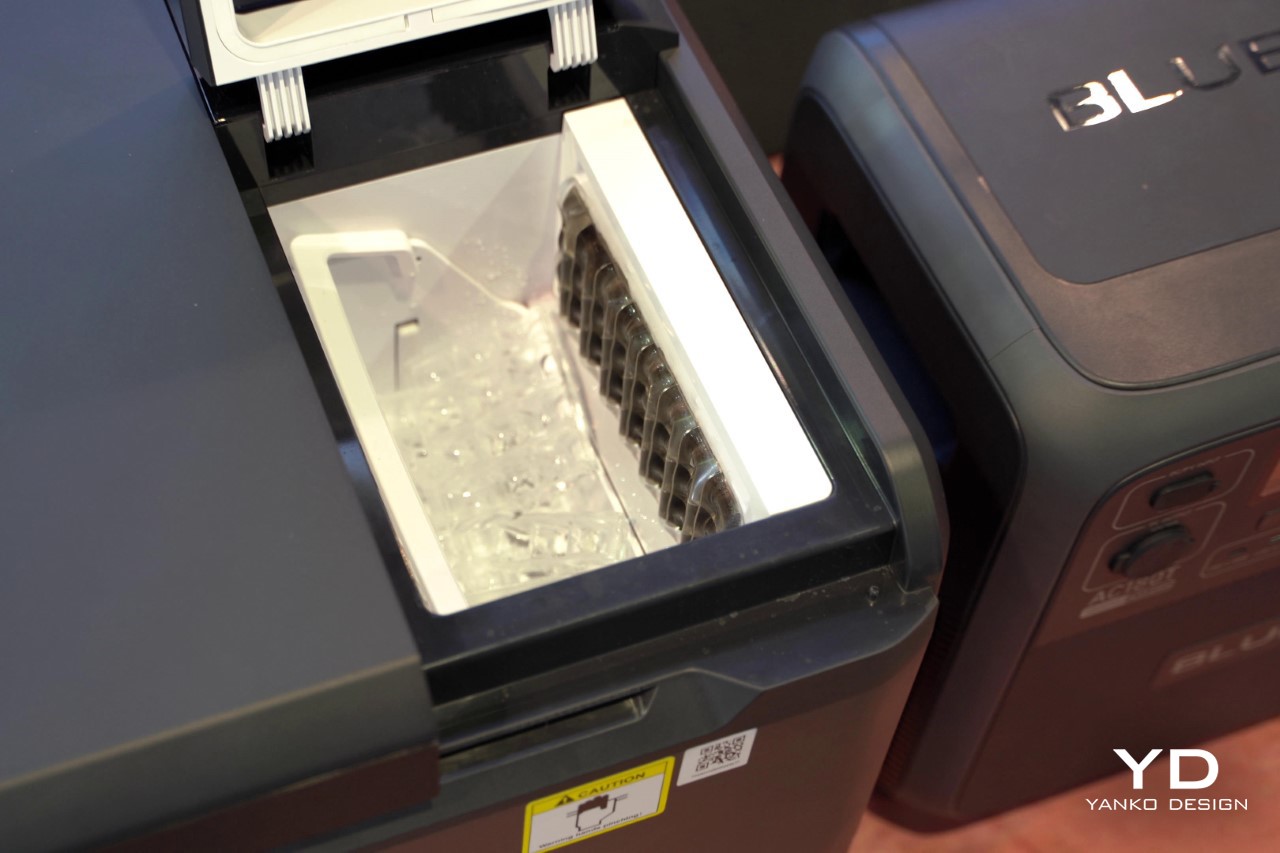
But that’s not all. The MultiCooler is the Swiss Army knife of portable fridges. Acting as a fridge, freezer, and, believe it or not, an ice maker, it redefines the concept of portable cooling. Featuring a 40-liter compartment with temperature control from -20°C to 20°C (-4°F to 68°F), the MultiCooler can chill a staggering 65 cans of soda (or any beverage of your choosing) or keep the sausages frozen for a picnic. It also boasts the ability to make ice from moving water, a feature that Phillip mentioned was “really cool” (pun intended!)
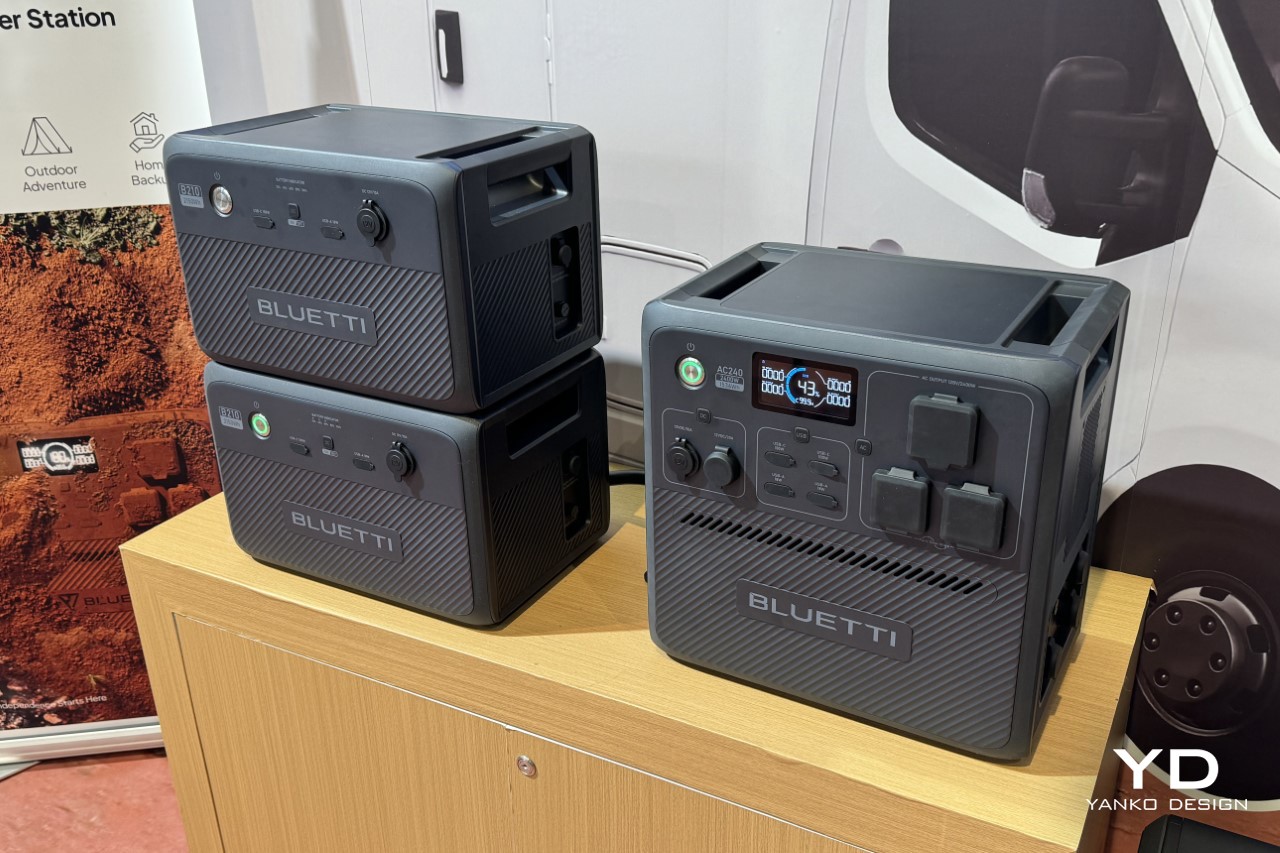
Next up, meet the AC240, BLUETTI’s rugged outdoor companion following the legacy of the AC60. Tailor-made for the wild, this power station is both water-resistant and dust-proof, boasting an impressive IP65 rating. Whether you’re facing a dust storm in the desert or a downpour in the mountains, the AC240 won’t let you down. With a robust 2400W of power output and a 1536Wh LFP battery, it’s built to last. And if you thought that was impressive, the AC240 can expand its capacity to a whopping 10kWh with four B210 expansion batteries. BLUETTI didn’t stop there. They also showcased their revamped portable generators and home storage products, including the AC60P, AC2P, and the modular AC500 and AC300 series.
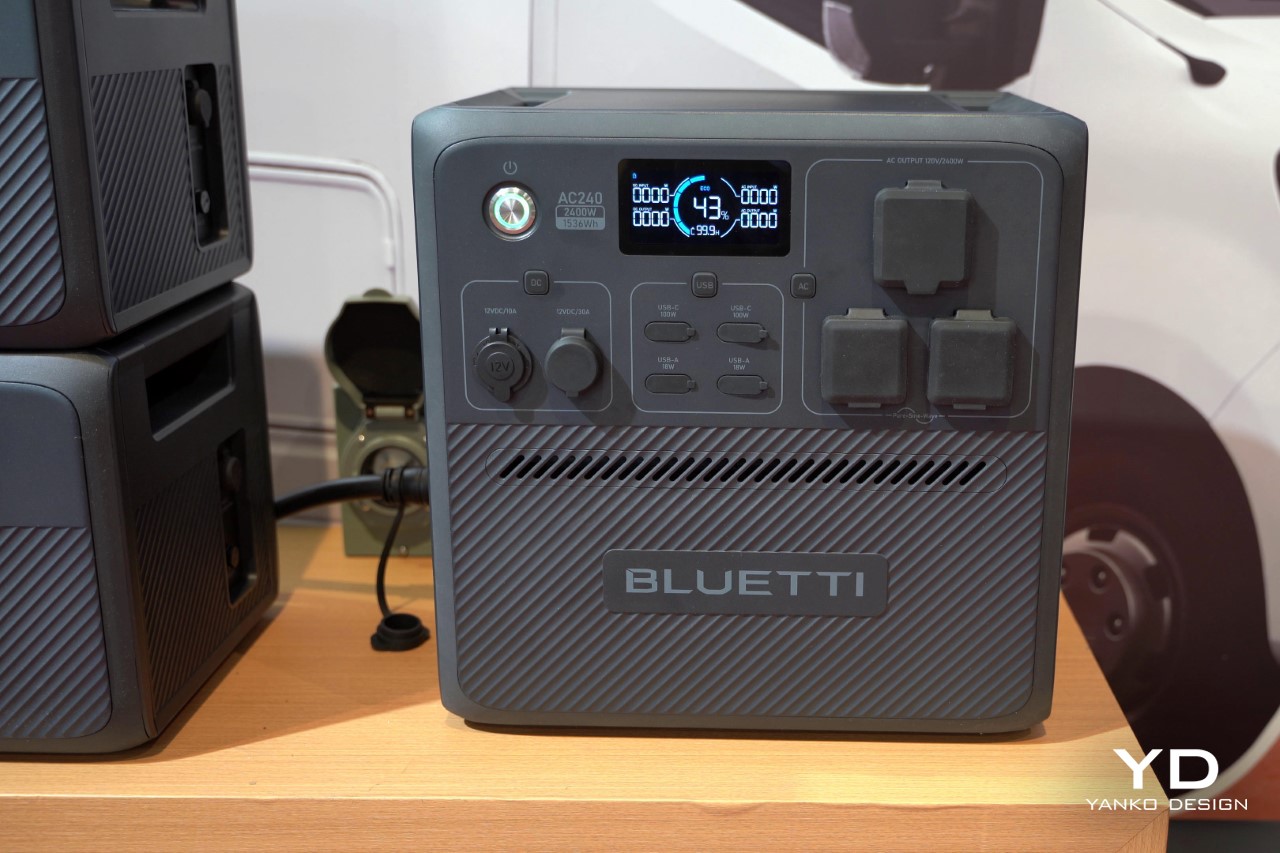
In the midst of unveiling these technological marvels, BLUETTI also took a moment to highlight its Lighting an African Family (LAAF) program. This initiative underscores BLUETTI’s commitment to social responsibility, bringing sustainable solar energy to African families. With over 100,000 families already impacted, BLUETTI is powering more than devices; it’s powering dreams.
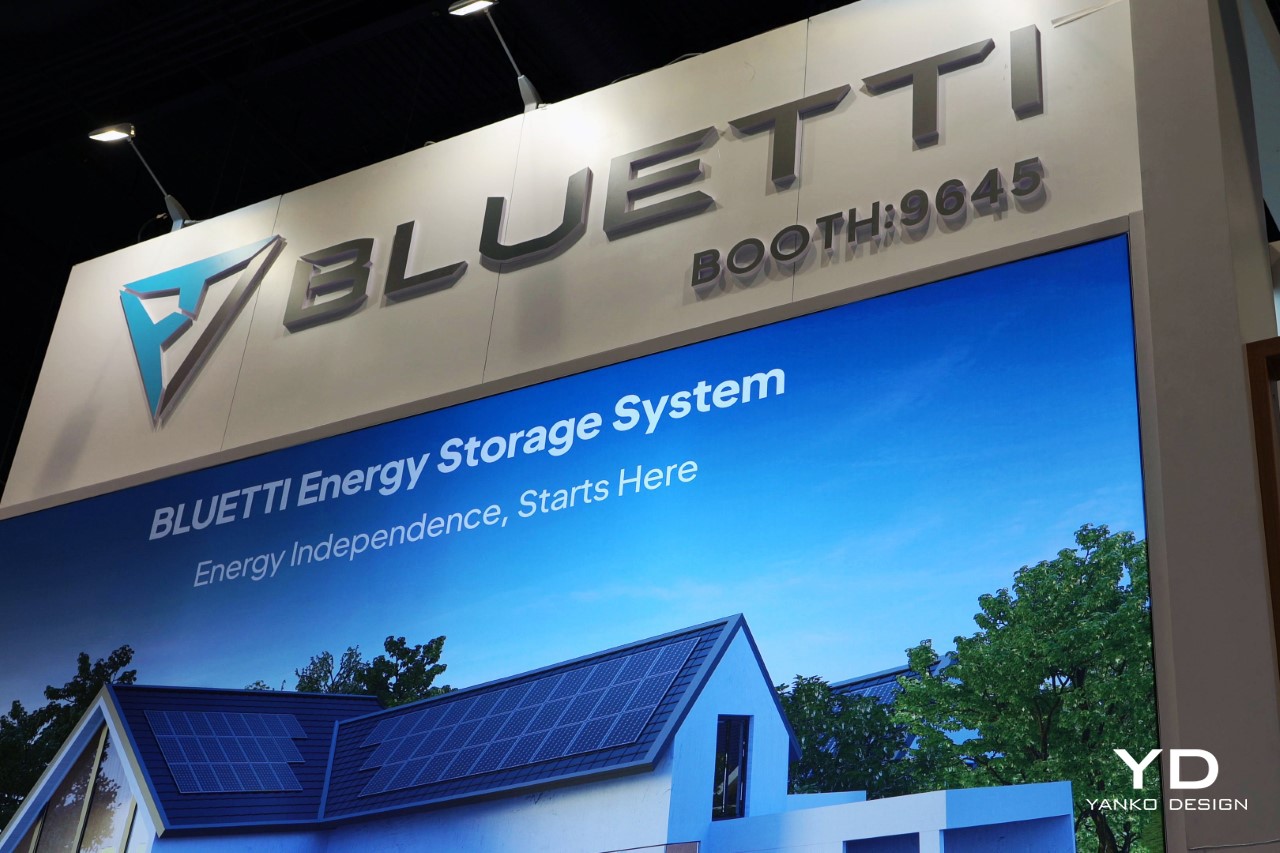
The post BLUETTI’s wide catalog of Power Stations at CES 2024 make it an Absolute Must-Have for 2024 first appeared on Yanko Design.
At CES 2024, Ugreen has made a significant statement in the world of data storage by introducing its new NASync series. This foray marks Ugreen’s expansion beyond its traditional scope of charging and accessories into the realm of Network Attached Storage (NAS), doing so with a flair for innovation and user engagement. The NASync device also targets regular consumers (rather than the enterprise-specific tech users that usually rely on network-attached storage) – this shift comes with its distinct benefits, as Ugreen highlighted in their keynote, talking about how the NASync could now become the iCloud or Google Drive alternative that you don’t have to pay monthly subscriptions for… or the Netflix or Disney Plus streaming service that lets you play movies/media you own on any connected device anywhere.
Designer: Ugreen
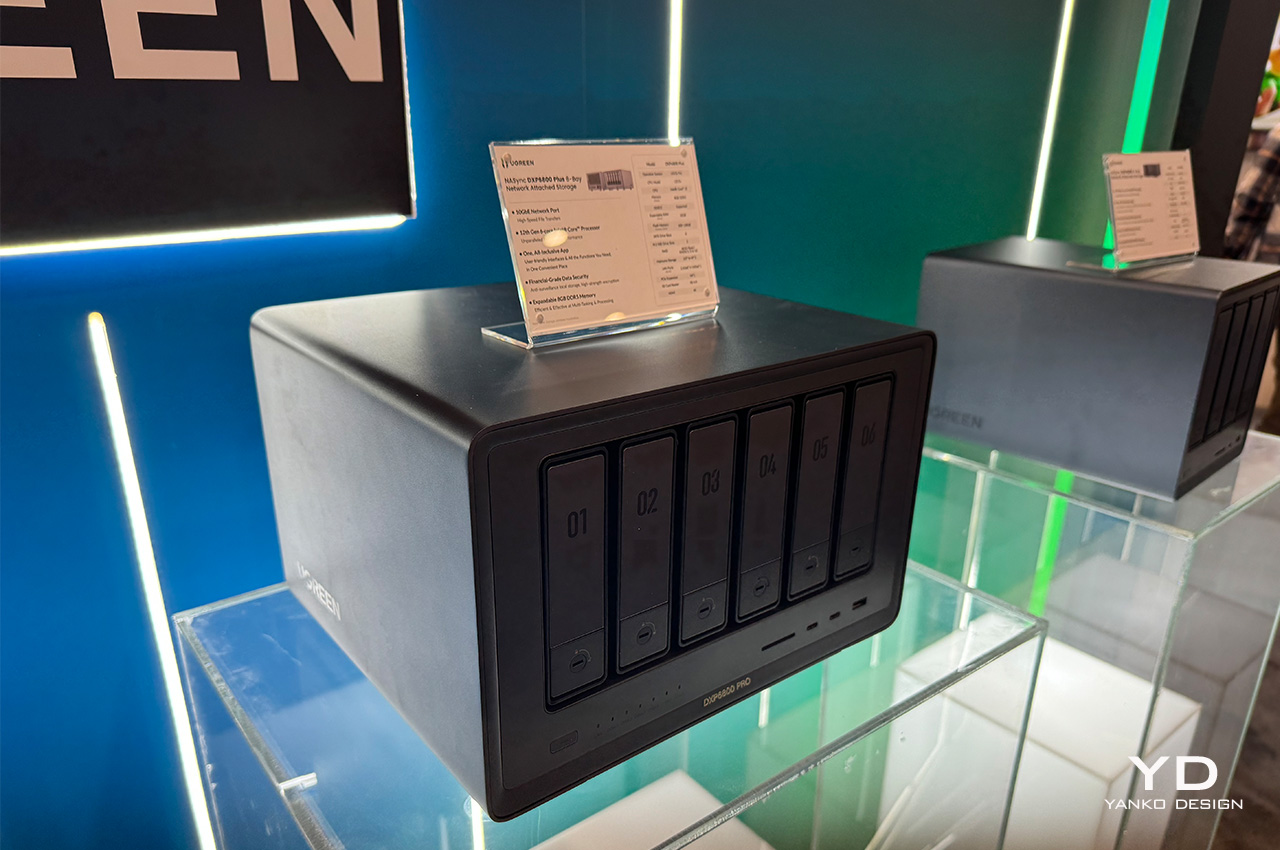
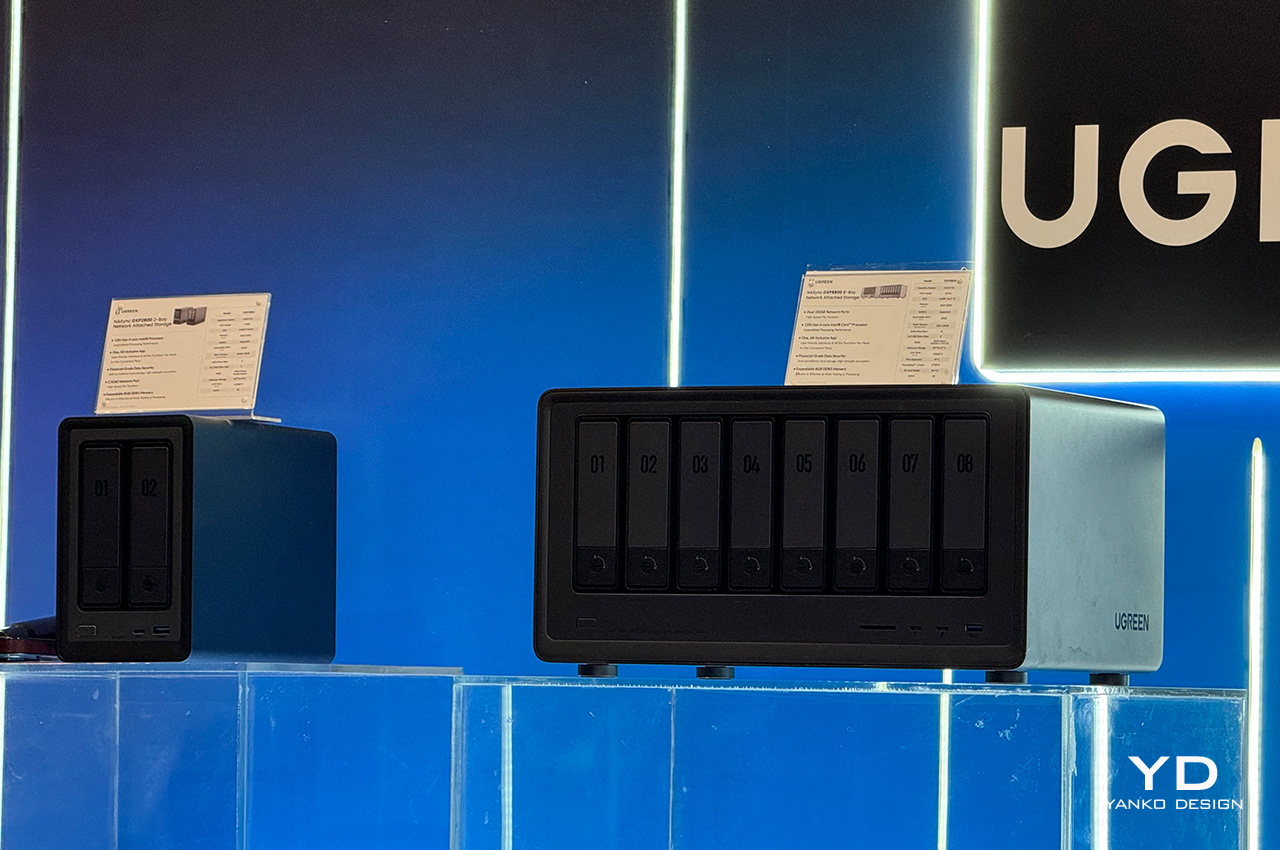
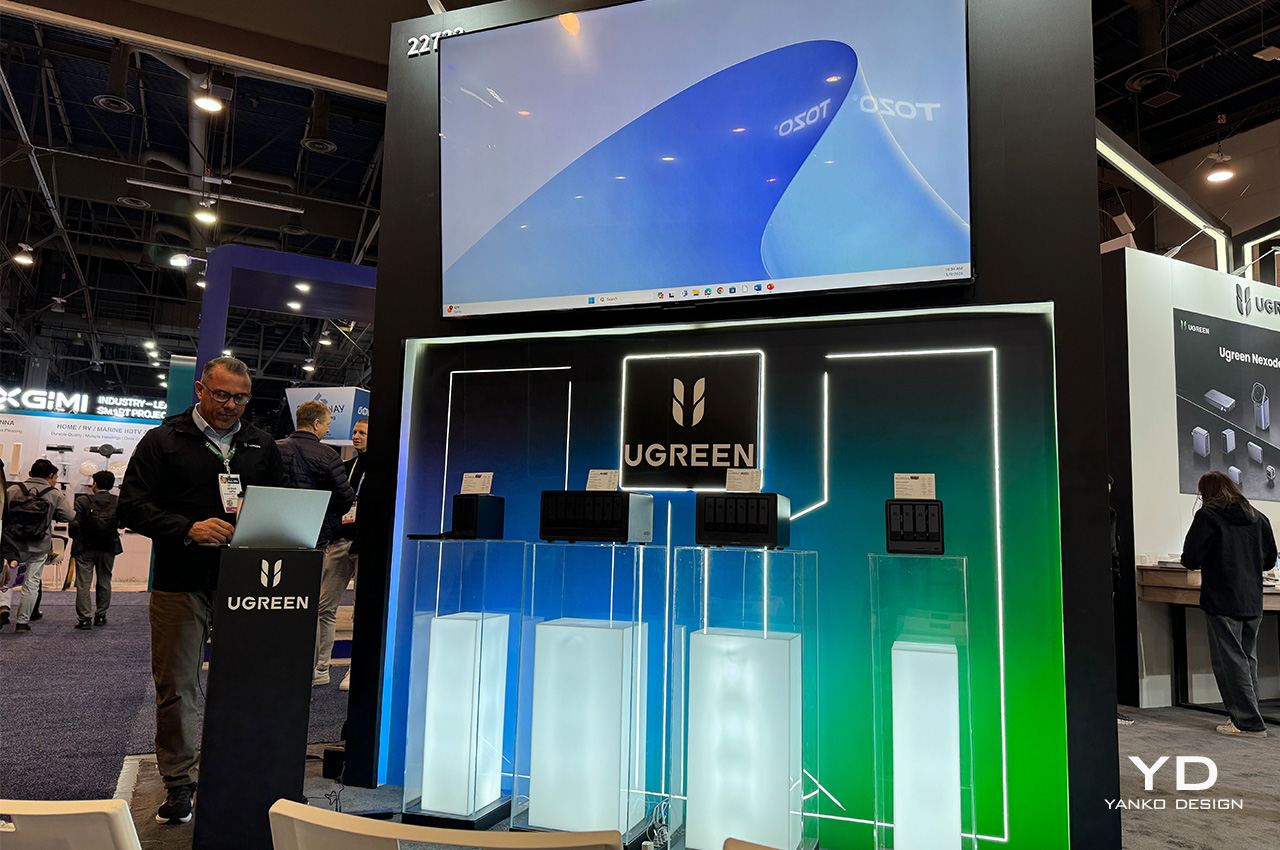
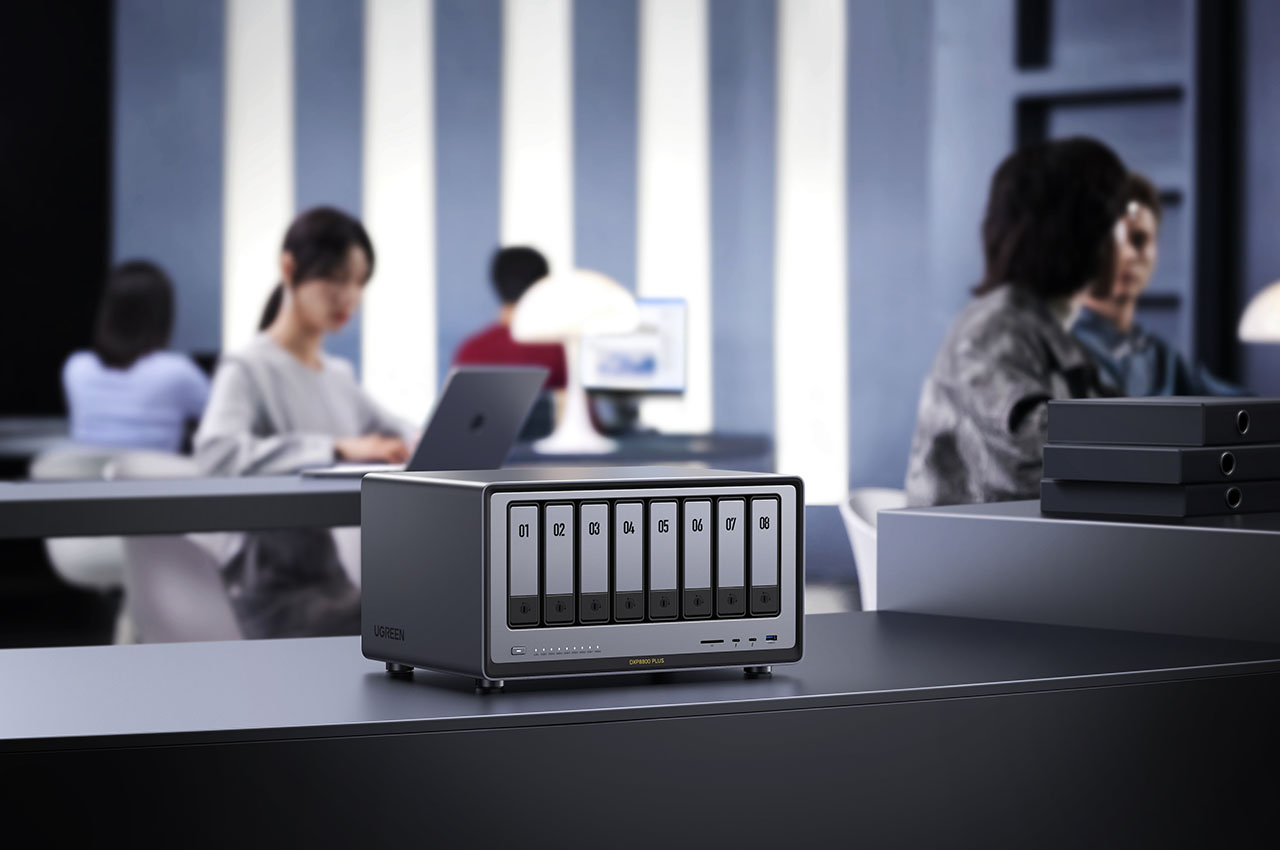
The collaboration with Intel is a cornerstone of the NASync series, empowering these devices with Intel® processors. This partnership brings together Ugreen’s expertise in HDD and SSD solutions and Intel’s robust capabilities in cloud computing and PC components, creating a product that stands out for its technical excellence and user-friendly approach.
The integration of AI is a key highlight of the NASync series. This is a core component that transforms the NASync into an intelligent hub for digital activities. The AI in these devices is designed to adapt to user behaviors, streamlining tasks and offering personalized experiences. The NASync device can automatically read text within an image or a document, allowing you to then search for text WITHIN a file (like finding all invoices with a certain client’s name). Ugreen’s Hernan Lopez also demonstrated the ability to create visual tags, with the AI autonomously learning what different objects (or even faces) look like. For instance, you could create a tag for “Drone” and then visually search through your entire database for drone images, with the AI automatically understanding the visual archetype of a drone’s design. It all happens locally, allowing you to build your own Google Image Search right within the comforts of your own home.
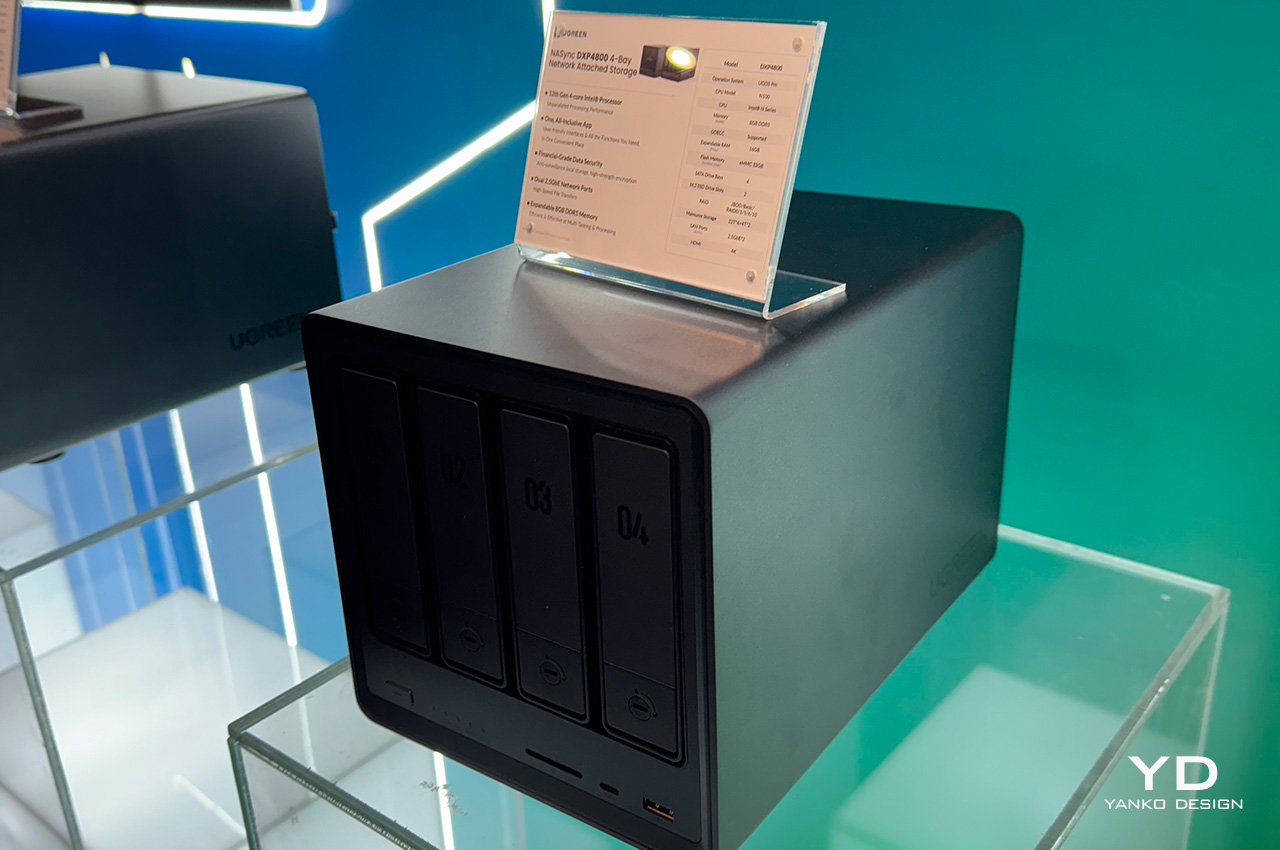
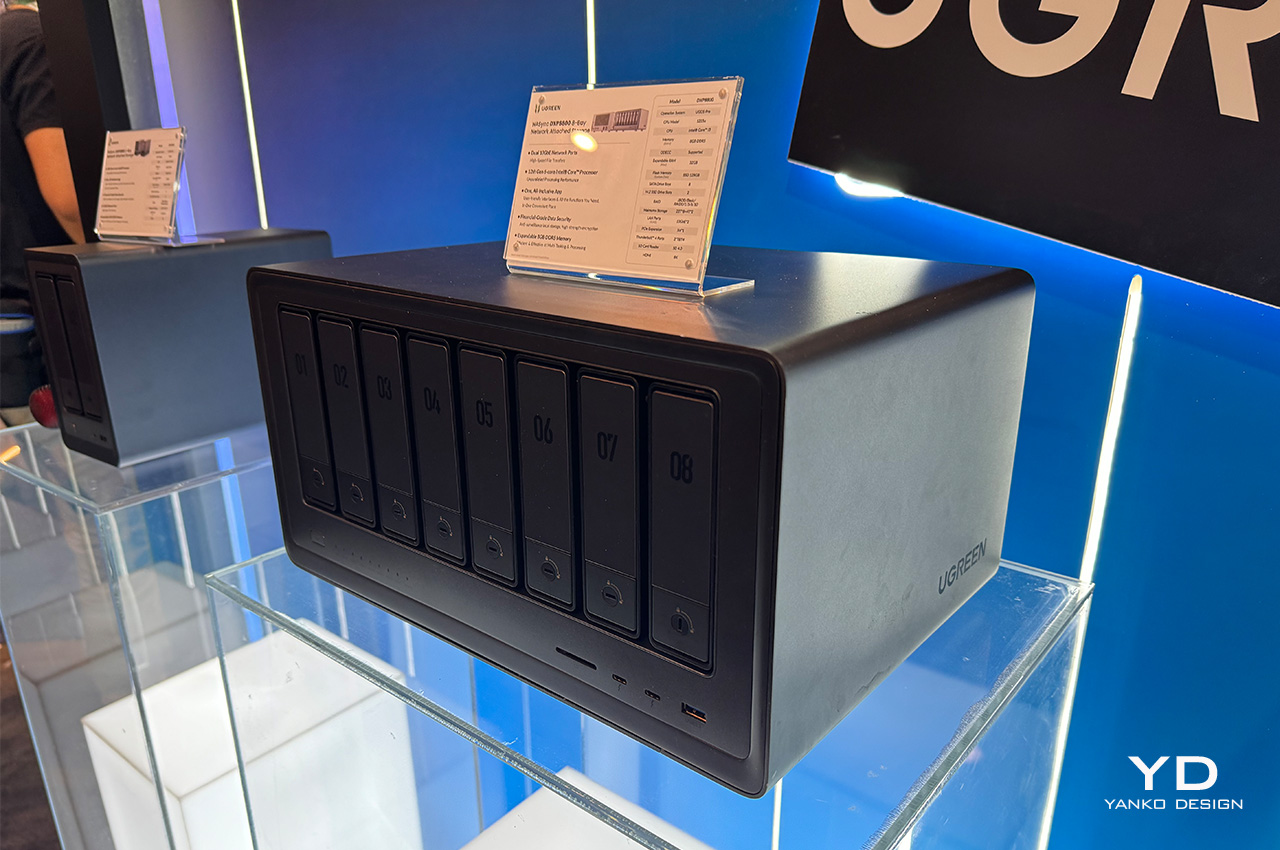
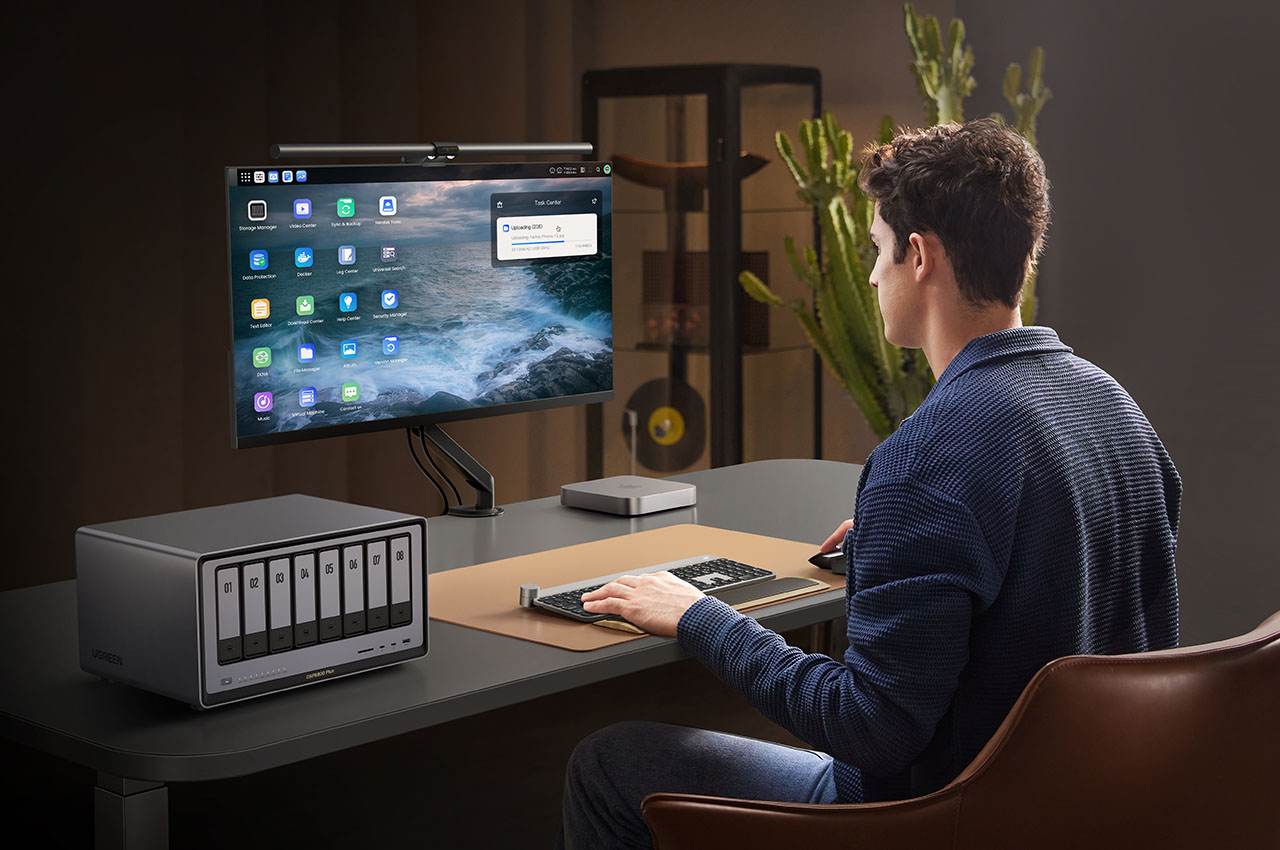
Ugreen has also placed a significant emphasis on the design of the NASync, ensuring it is approachable for a wide range of users. The focus on a user-friendly interface, both in the hardware’s physical design and the software interaction, makes NASync an accessible yet powerful tool for anyone, regardless of their technical expertise. Easy hot-swappable drives allow users to add new HDDs or SSDs on demand, and if a drive fails, they can simply swap the old one out for a new one while still maintaining all their data on the NAS.
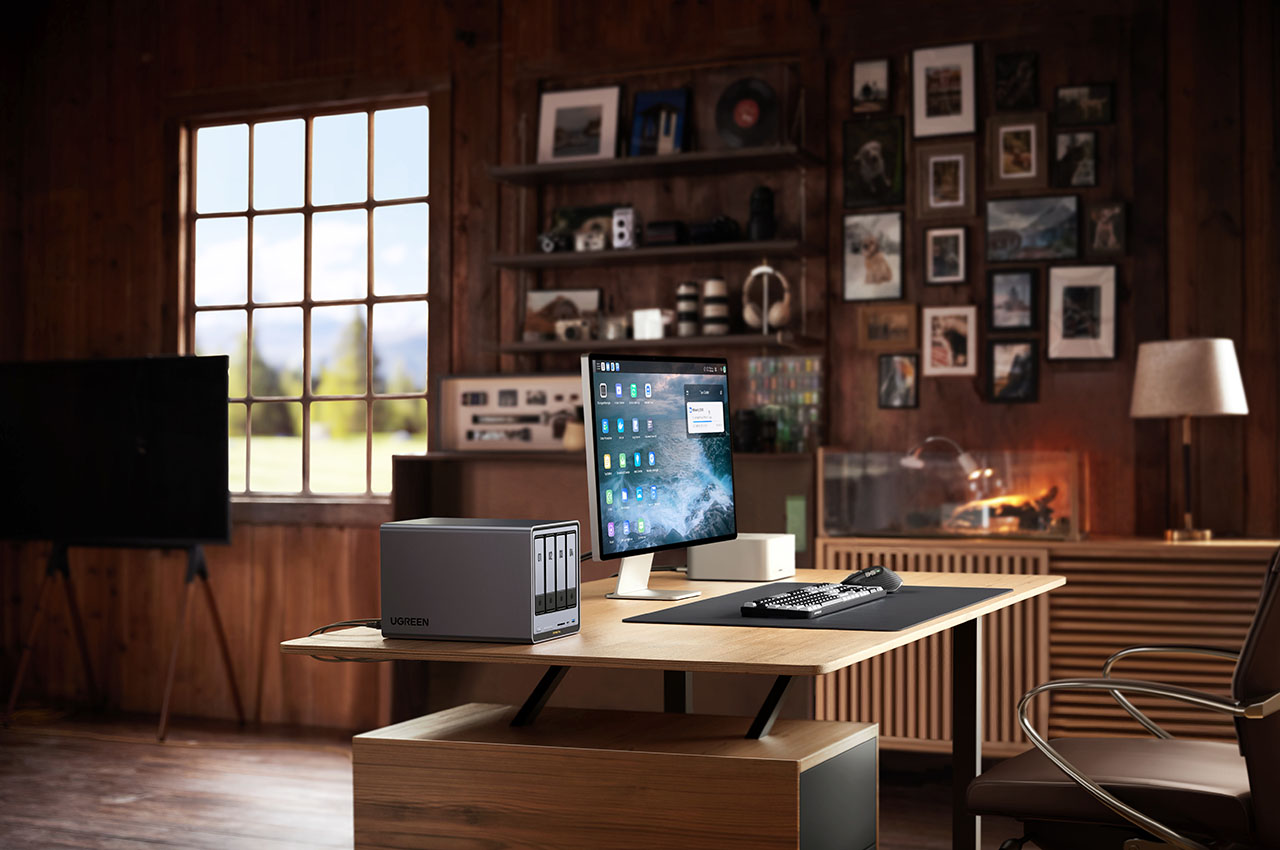
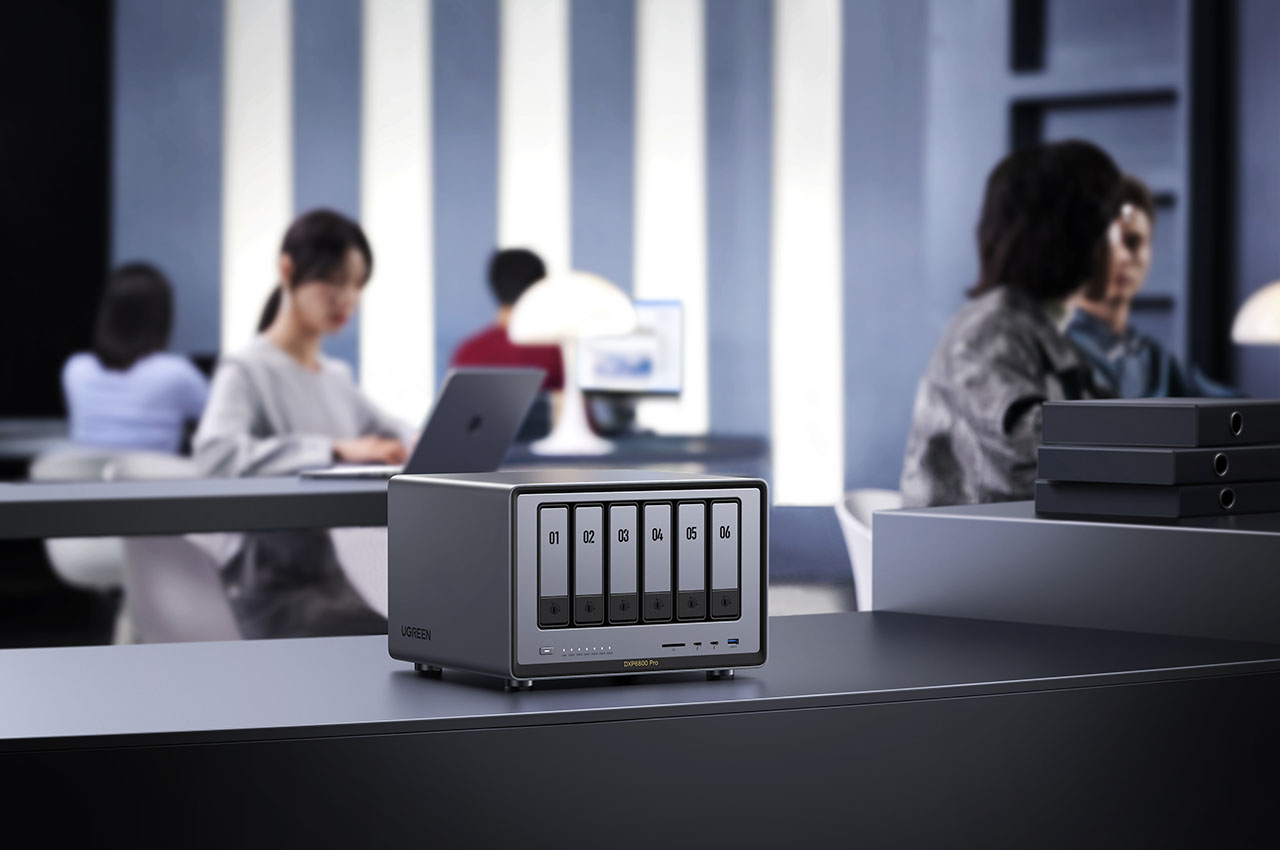
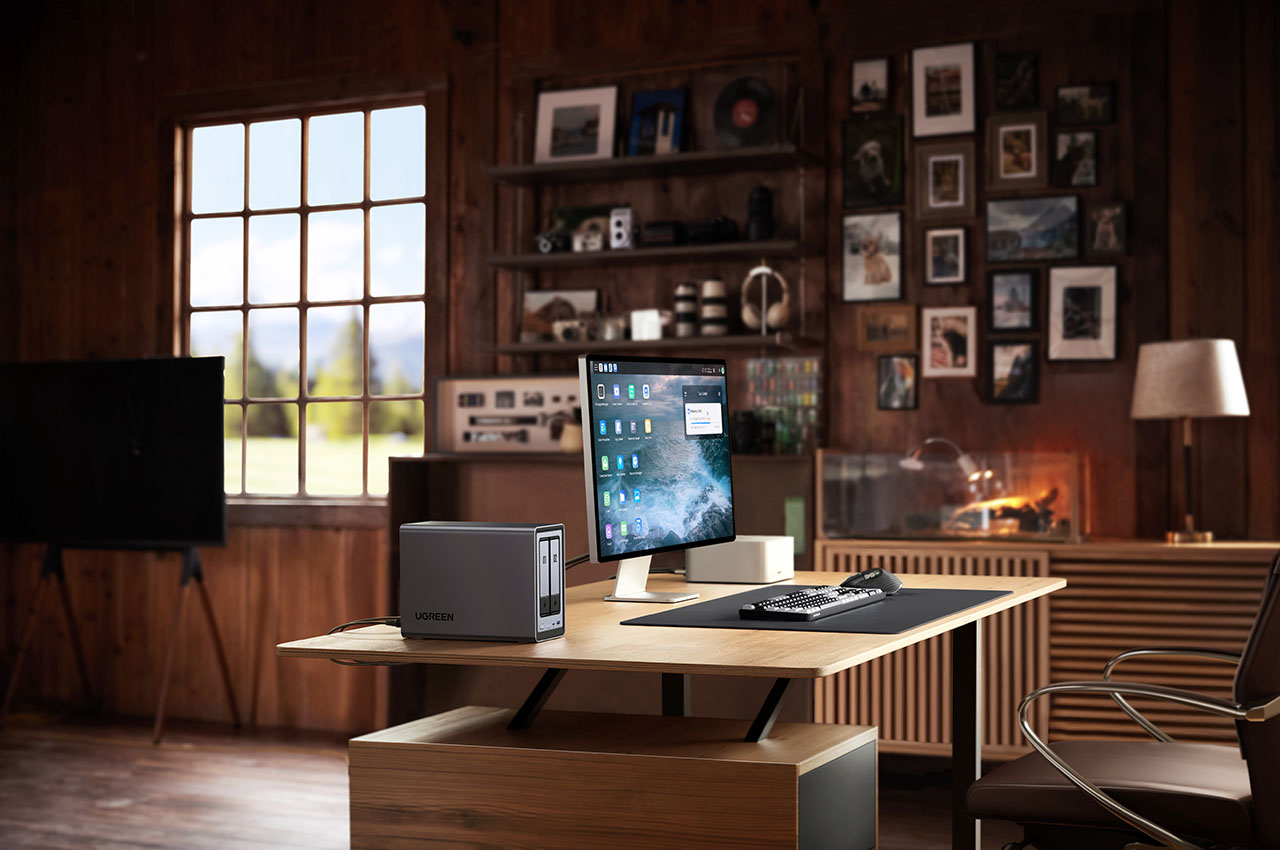
The NASync series stands as a powerful example of Ugreen’s commitment to blending high-tech features with ease of use. It’s a product that respects the user’s need for simplicity without compromising on performance – ideal for managing large data sets, running AI algorithms, or effortlessly streaming 8K video.
Ugreen’s entrance into the NAS market with the NASync series is reflective of the brand’s evolution and its commitment to being at the forefront of technology. This series is a bold demonstration of Ugreen’s ability to infuse cutting-edge technology into consumer-friendly products.
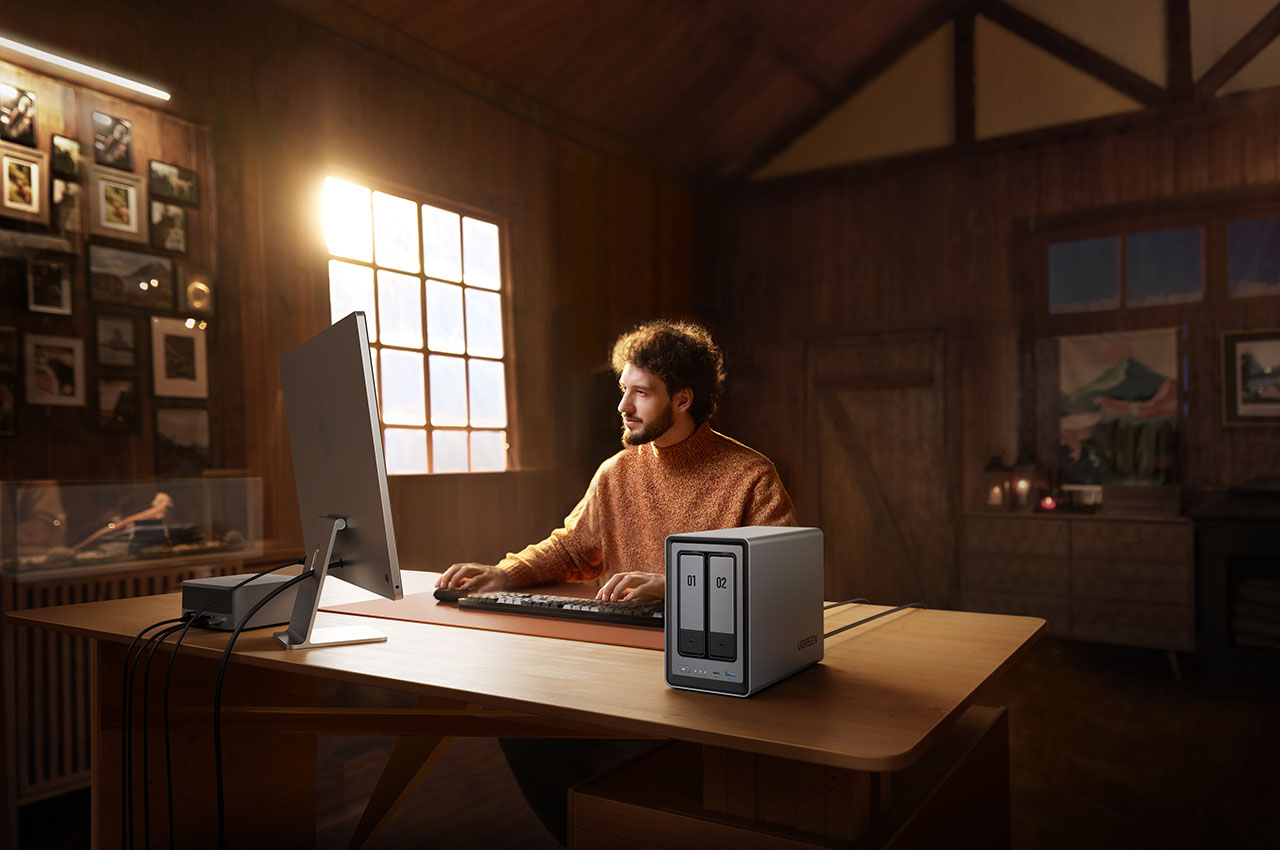
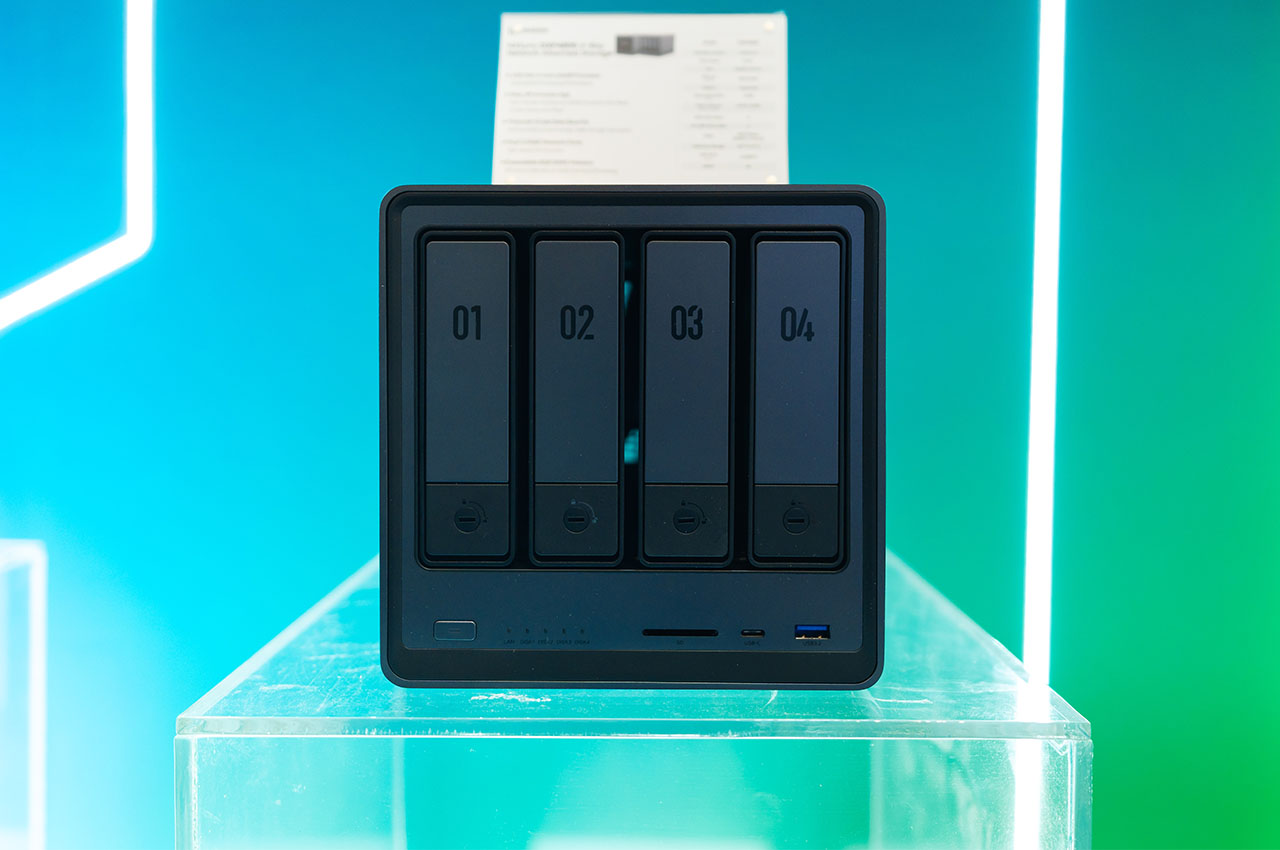
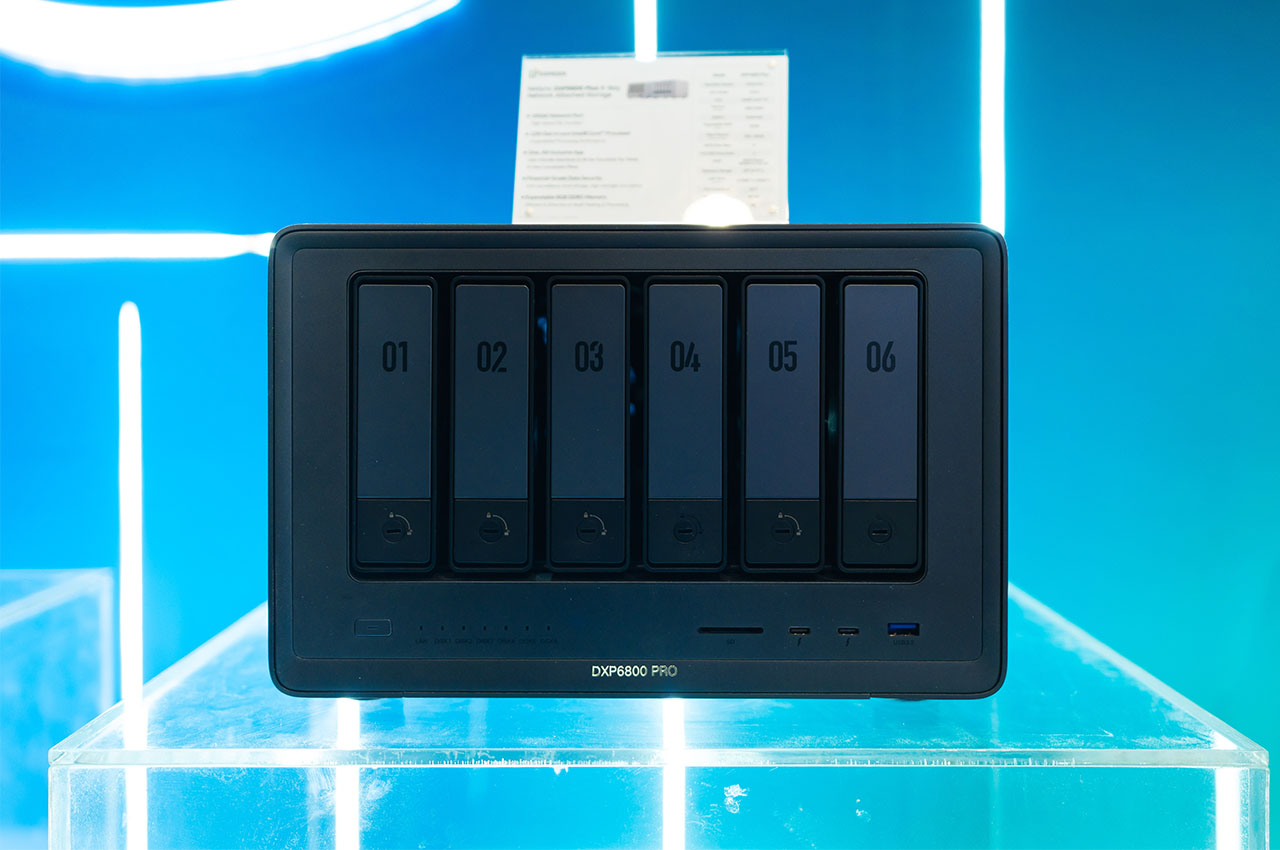
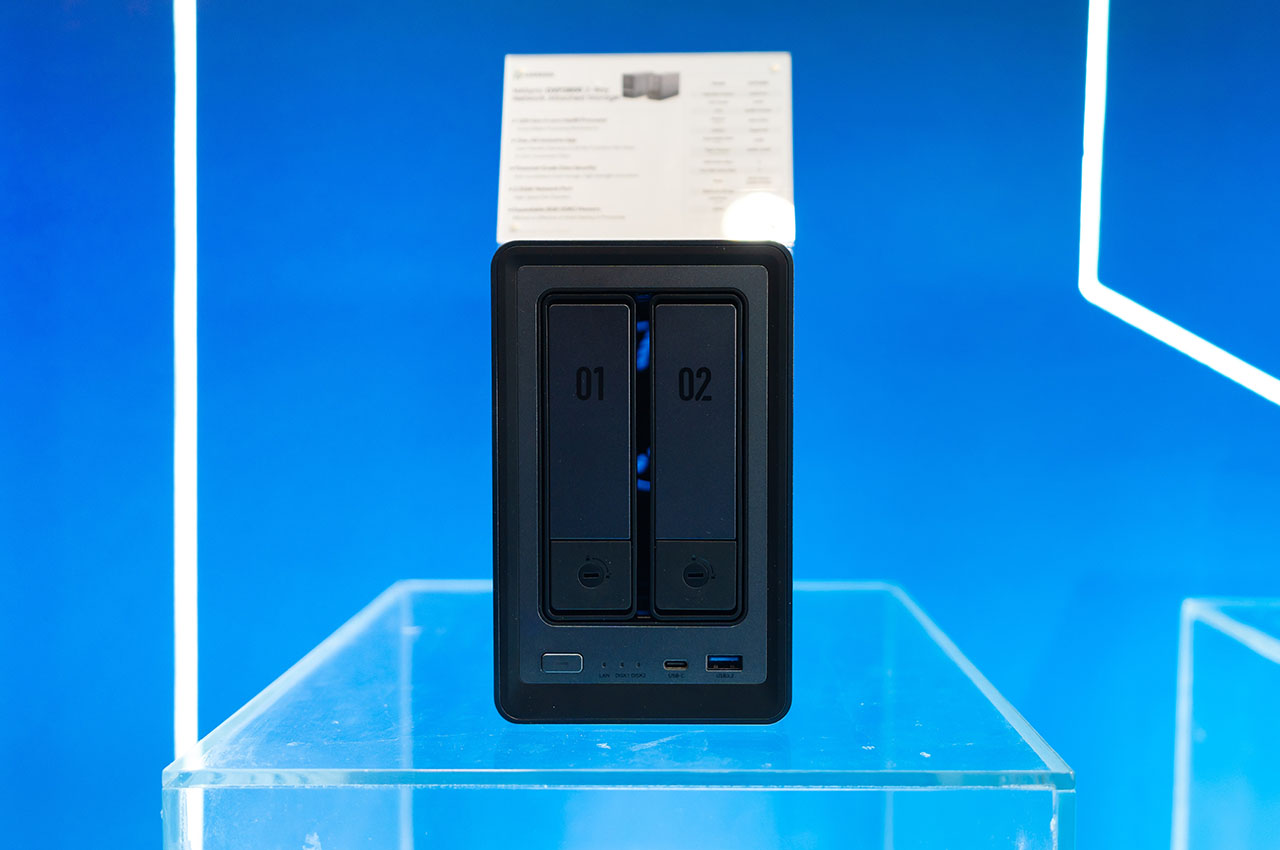
As we look at Ugreen’s new venture at CES 2024, it’s evident that the NASync series is more than a set of NAS devices; it’s a harbinger of how integrated and intelligent technology can become a seamless part of our daily lives. The NASync isn’t just about data storage; it represents a smarter, more intuitive way of interacting with our digital world.
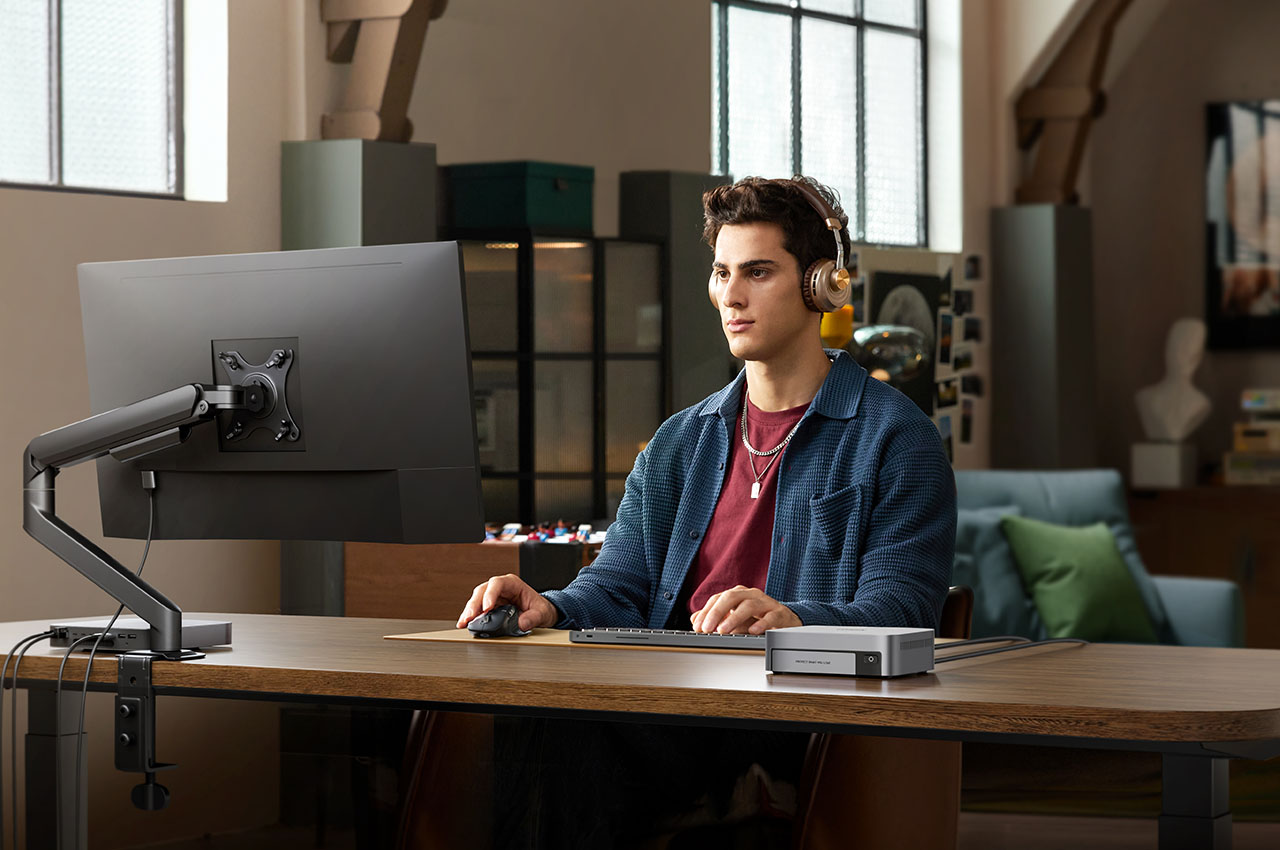
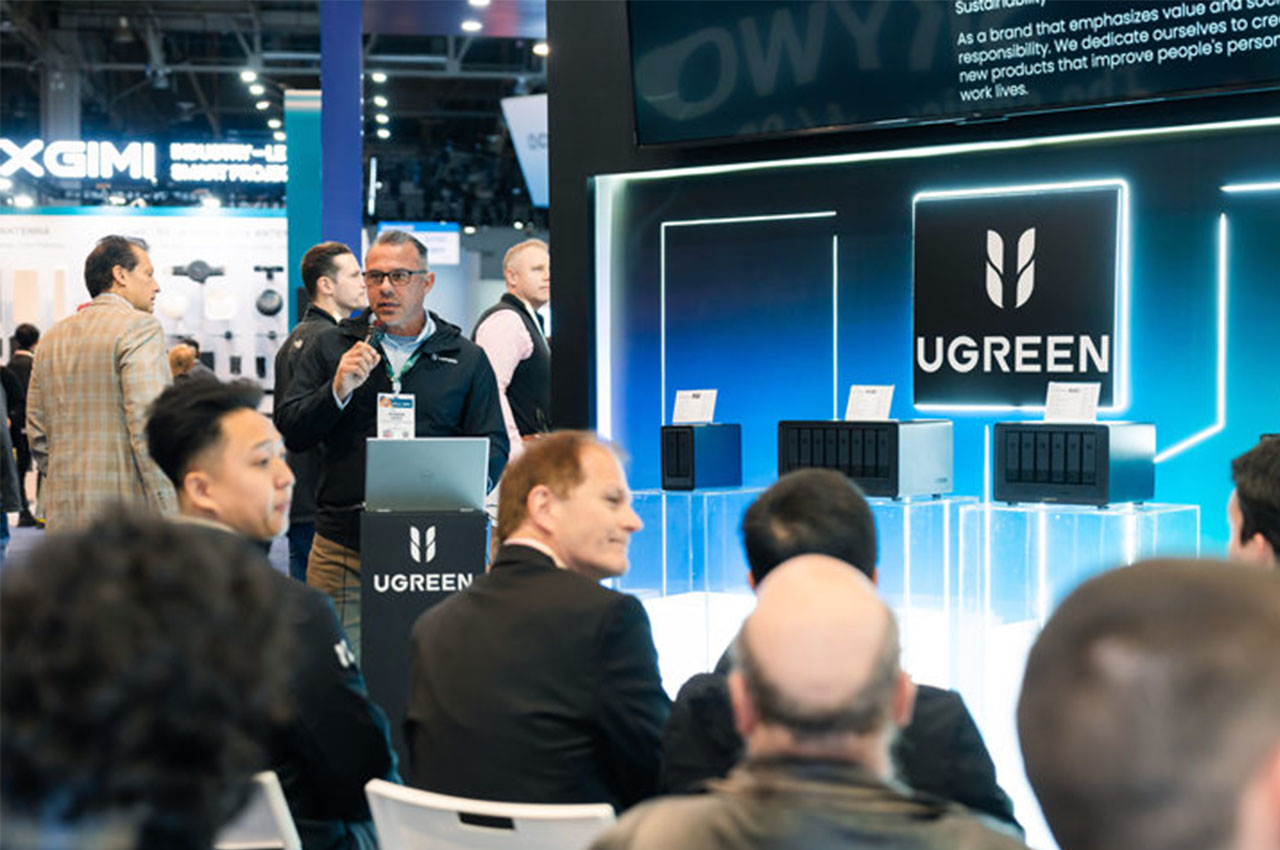

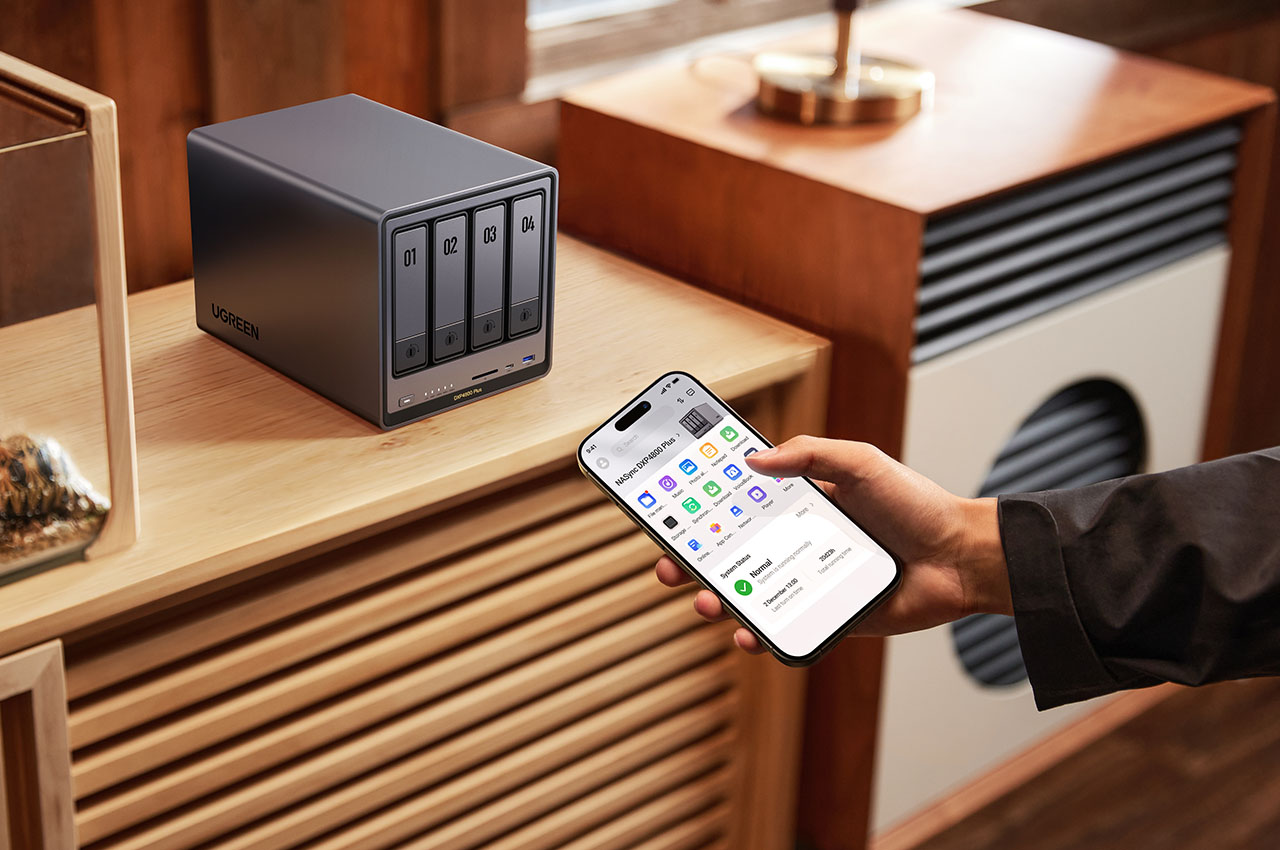
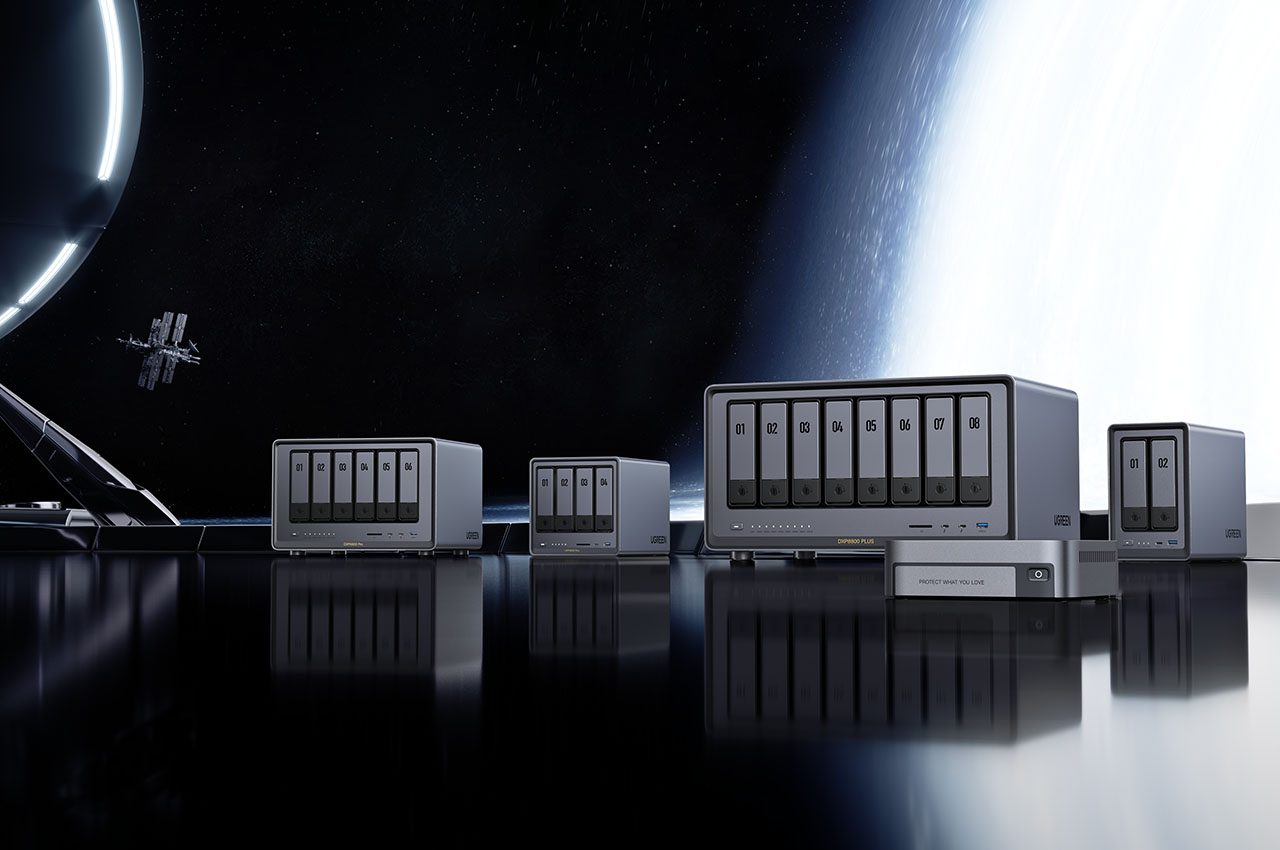
The post Ugreen’s NASync at CES 2024: Redefining Smart Storage with AI and User-Centric Design first appeared on Yanko Design.
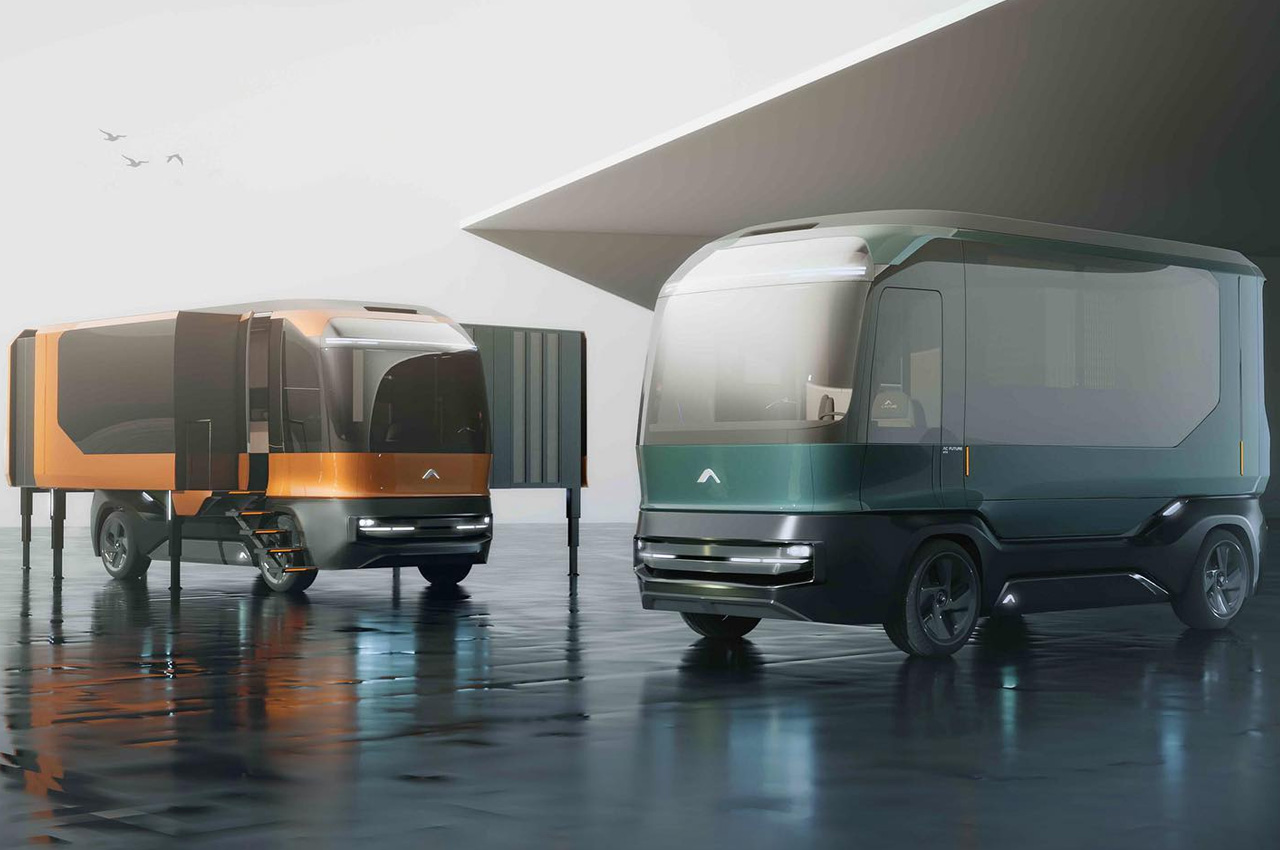
eVTOL aircrafts may be the future of personal aviation but the future of adventures on the road would be an all-encompassing recreational vehicle that transforms from its minimal structure on demand. We have seen a few iterations of travel trailers – such as the Rockwood Roo – that fit the notion, but the smart expanding ability with sustainable features is yet to reach recreational vehicles.
That’s what we thought until going up and personal with the eTH, an Electric Transformer House, doing rounds at CES in its rendered glory. A sublime blend of comfort, smart tech, and sustainability; it is by far the most futuristic mobile living space present in Vegas, at the time of writing. Visioned with the future in mind, eTH is the brainchild of Italian design house Pininfarina and AC Future, a leading inventor of living solutions for the future.
Designer: Pininfarina and AC Future
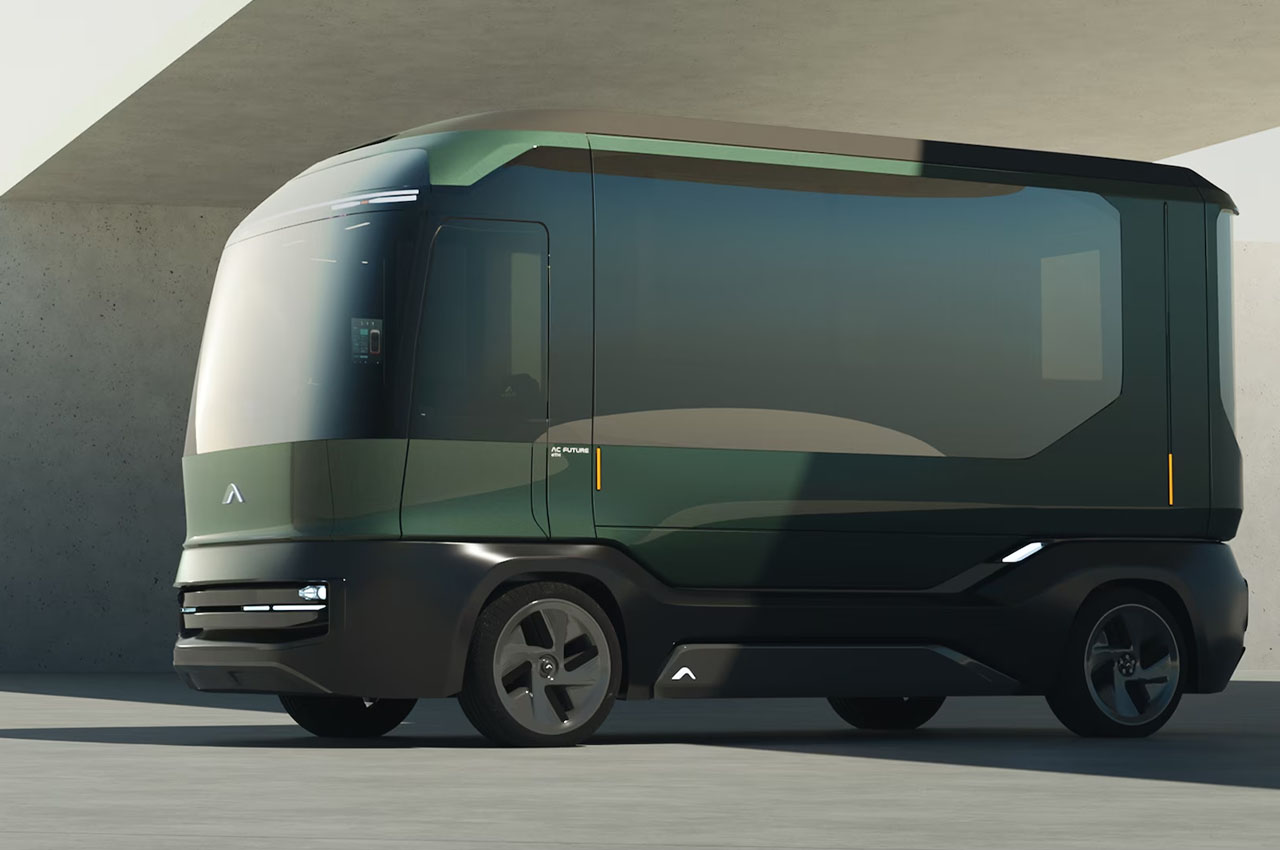
This mobile living space is a green van that features an all-glass upper body. The developers have a proof of concept at CES, and from how we learn, the prototype could be on the way. The mass production for this ultra-capable, highly functional, and amazingly luxurious mobile home is aligned for the fourth quarter of 2025, that’s if all were to go as planned.

This out-of-the-ordinary electric recreational vehicle is different from the usual market-ready options in two departments: first, its expansion ability and second, the vivid sustainable functions on board. The eTH aligns in the former segment with movable walls, which allows the structure of the modular living space to expand from 20-foot-long, 11-foot-high to a good 400 square feet abode on the push of a button.
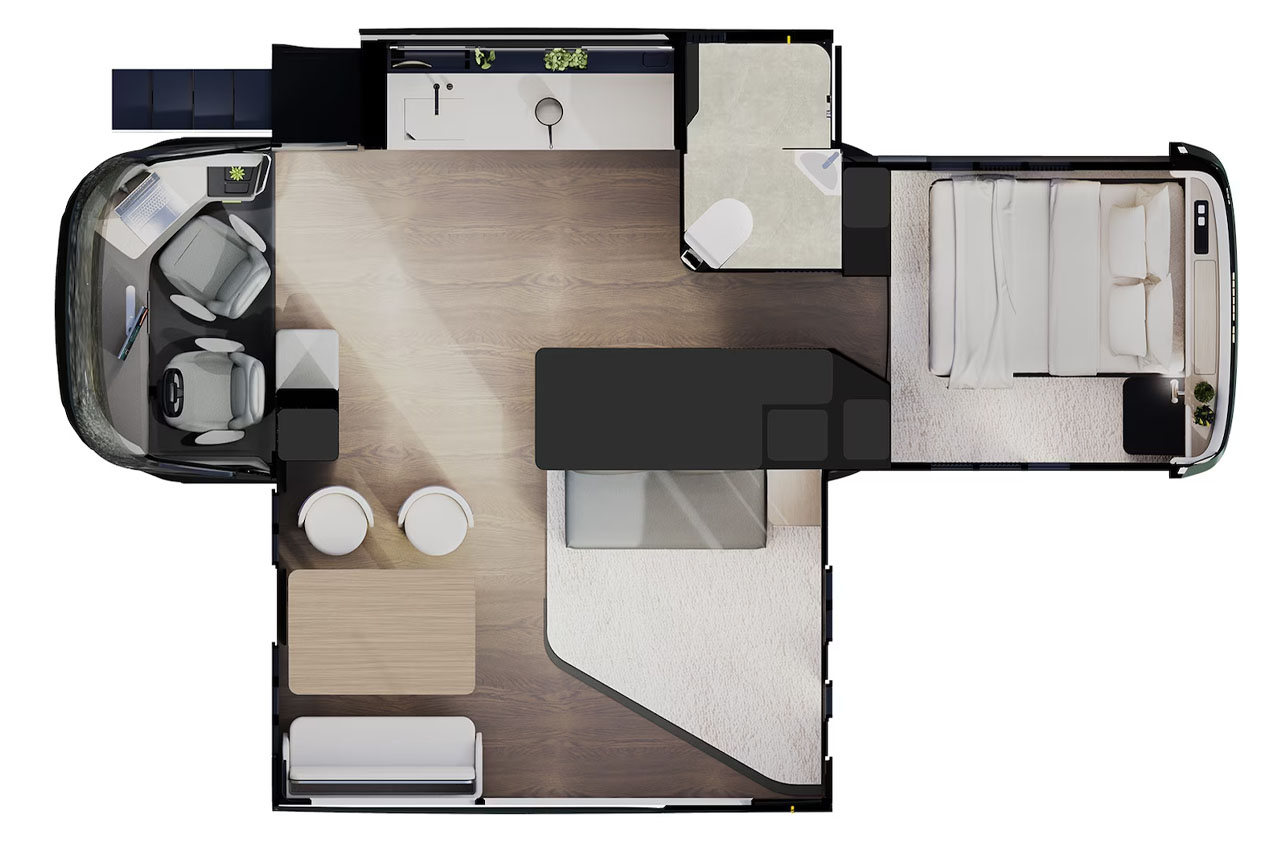
While the expanding form factor of the eTH would allow the RV to redefine the concept of living on wheels, it will be the inherent off-grid features that would make it a haven for adventurers. To that end, the modular RV features retractable 25kWh solar panels on the roof and onboard batteries to power it for a week of off-the-grid living. Details on the sleeping facility, washroom, and kitchen are scanty at the moment, but the Electric Transformer House has an Atmospheric Water Generator that produces fresh drinking water from the air every day.
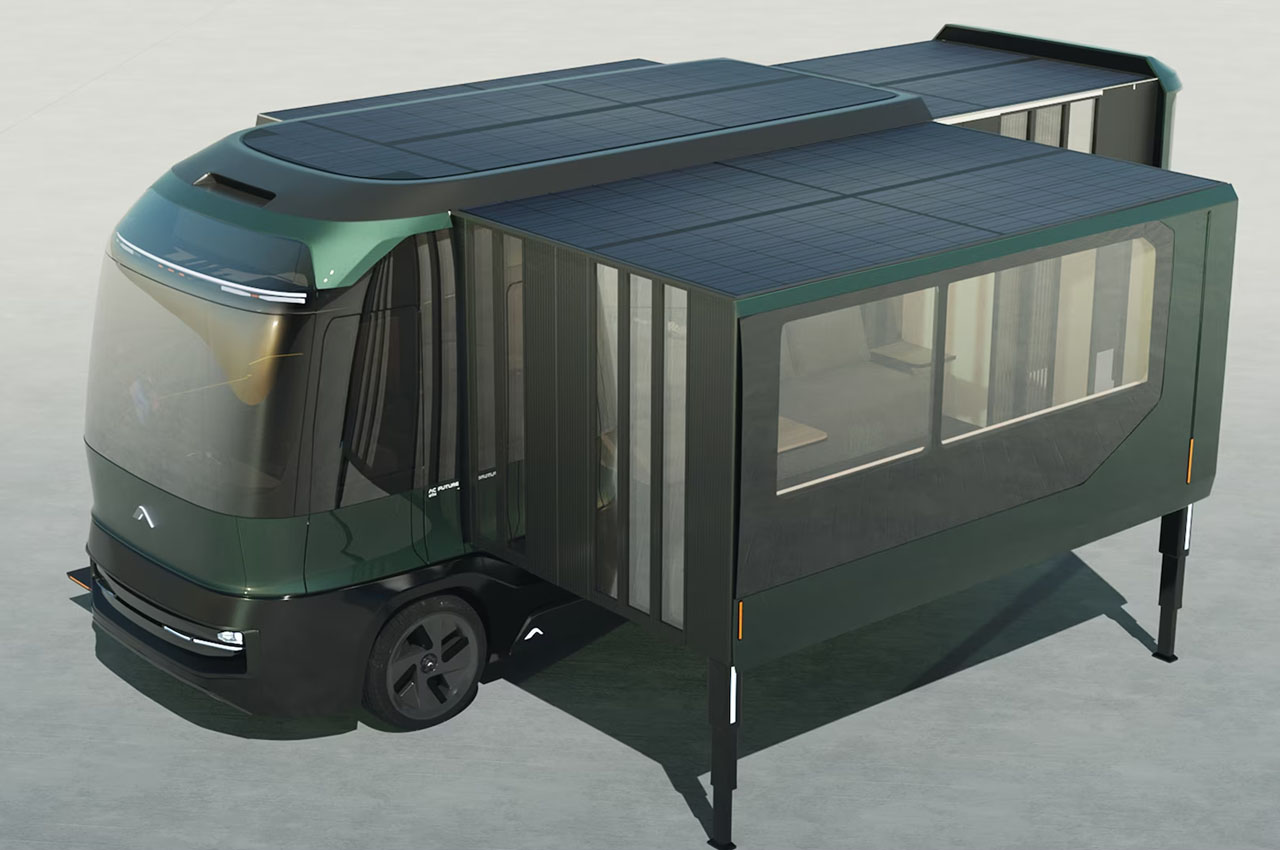
The fascination extends further into the inside of the eTH where folding furniture enthralls with the convenience it renders while driving or when halted for the night. The lux interior allows this RV to be used as a full-time residence or mobile home by nomadic workaholics. For the latter, the inventive cockpit with driver assist technology and entertainment hub has a dashboard that doubles as an office desk. The steering wheel retracts under and the space above becomes a functional workspace while Starlink and Co-Pilot take care of the connectivity requirements.
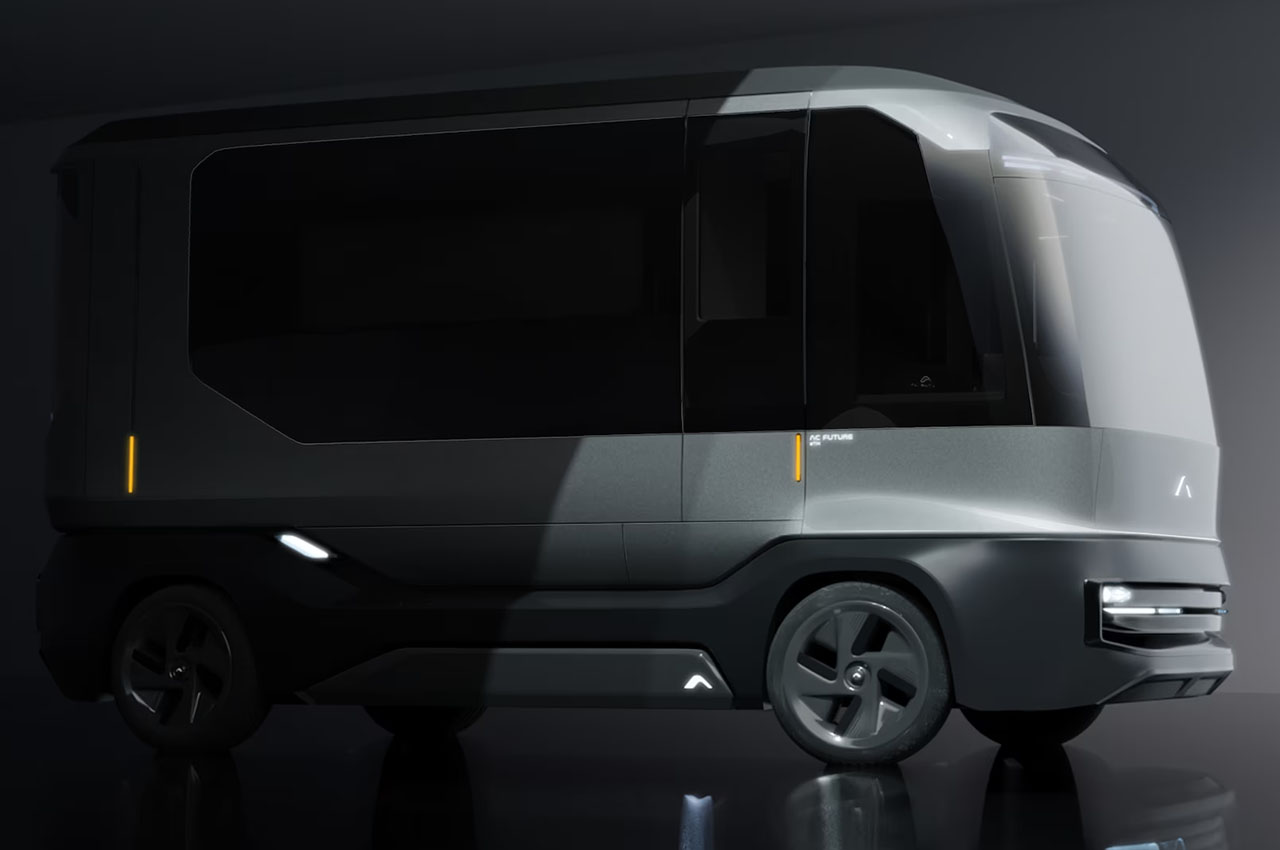
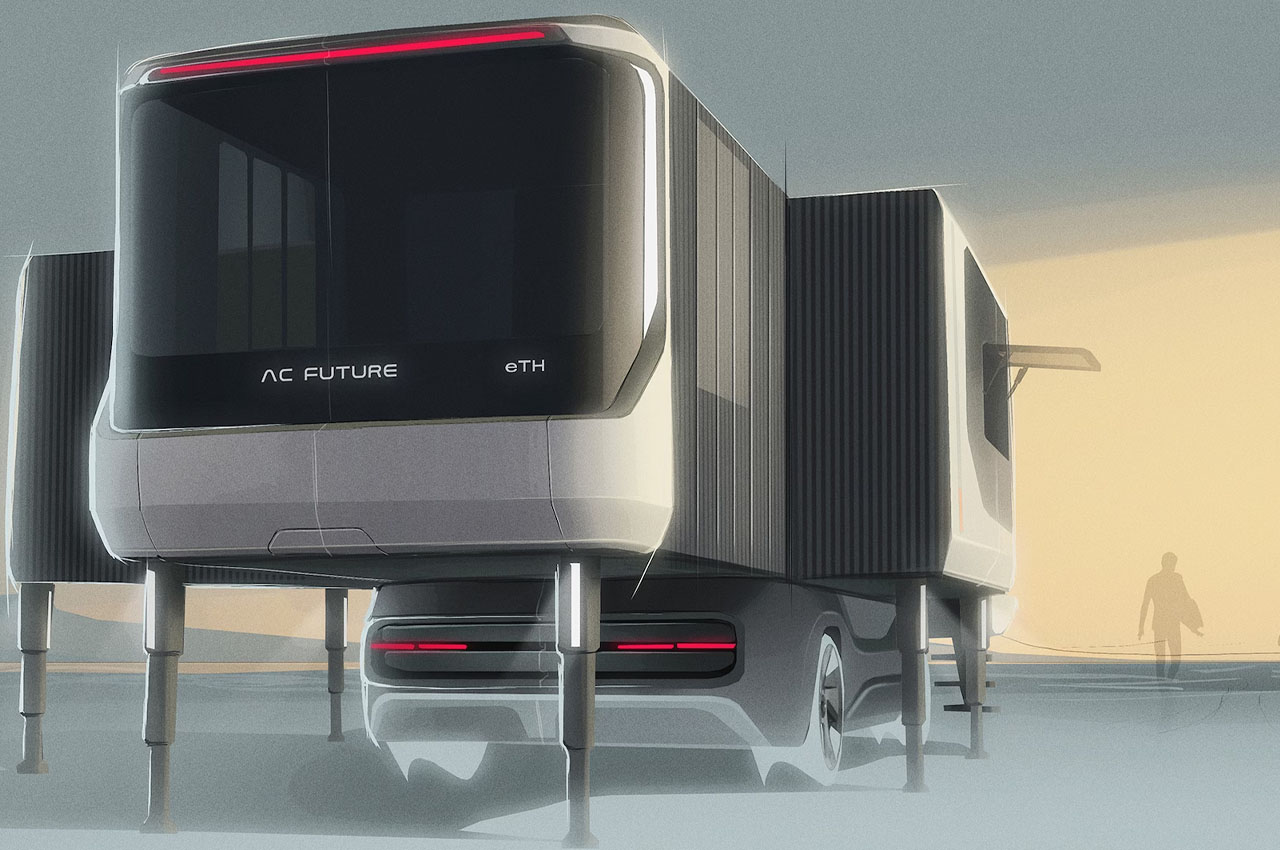
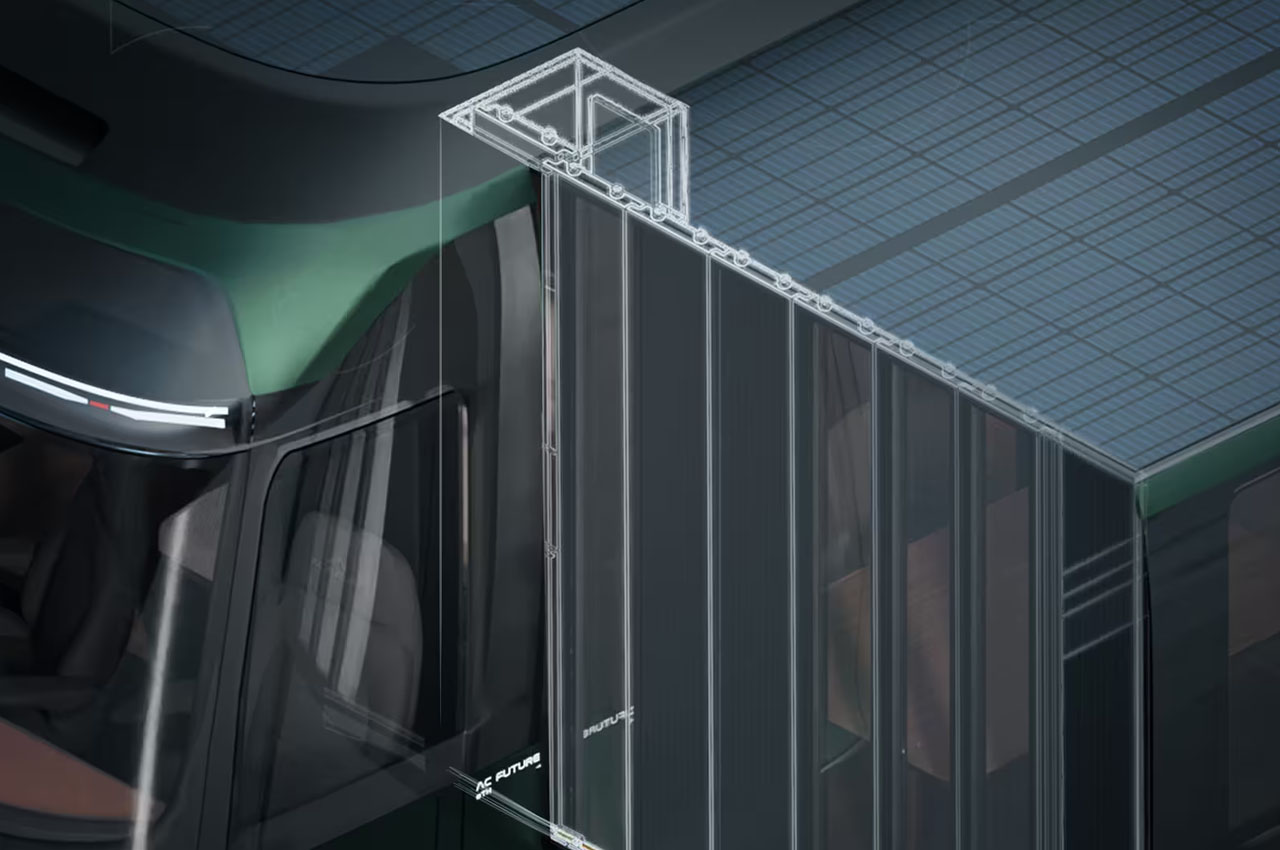


The post This 20-foot-long futuristic recreational vehicle has button-activated expandable walls to become a 400 sqft mobile home instantly first appeared on Yanko Design.